

Zitierweise / cite as:
Payer, Alois <1944 - >: Chronik Thailands = กาลานุกรมสยามประเทศไทย. -- Chronik 1997 / B. E. 2540. -- 2. datiert (Januar bis Dezember). -- Fassung vom 2017-03-20. -- URL: http://www.payer.de/thailandchronik/chronik1997b.htm
Erstmals publiziert: 2012-10-25
Überarbeitungen: 2017-03-20 [Ergänzungen] ; 2016-05-13 [Ergänzungen] ; 2016-03-01 [Ergänzungen] ; 2016-02-09 [Ergänzungen] ; 2016-01-03 [Ergänzungen] ; 2015-01-21 [Ergänzungen] ; 2014-11-17 [Ergänzungen] ; 2014-10-31 [Ergänzungen] ; 2014-10-09 [Ergänzungen] ; 2014-09-24 [Ergänzungen] ; 2014-09-11 [Ergänzungen] ; 2014-09-05 [Ergänzungen] ; 2014-08-25 [Ergänzungen] ; 2013-10-22 [Ergänzungen] ; 2013-10-13 [Ergänzungen] ; 2013-10-07 [Ergänzungen] ; 2013-05-24 [Ergänzungen] ; 2013-04-26 [Teilung des Jahrgangs] ; 2013-04-21 [Ergänzungen] ; 2013-04-08 [Ergänzungen] ; 2013-03-19 [Ergänzungen] ; 2013-03-09 [Ergänzungen] ; 2013-01-26 [Ergänzungen]
©opyright: Dieser Text steht der Allgemeinheit zur Verfügung. Eine Verwertung in Publikationen, die über übliche Zitate hinausgeht, bedarf der ausdrücklichen Genehmigung des Herausgebers.
Dieser Text ist Teil der Abteilung
Thailand von
Tüpfli's Global Village Library
ช้างตายทั้งตัวเอาใบบัวปิดไม่มิด
|
Gewidmet meiner lieben Frau Margarete Payer die seit unserem ersten Besuch in Thailand 1974 mit mir die Liebe zu den und die Sorge um die Bewohner Thailands teilt. |
|
Bei thailändischen Statistiken muss man mit allen Fehlerquellen rechnen, die in folgendem Werk beschrieben sind:
Die Statistikdiagramme geben also meistens eher qualitative als korrekte quantitative Beziehungen wieder.
|
1997-01-01 - 2006-12-31
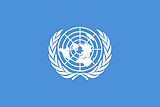
Der Ghanaer Kofi Atta Annan (1938 - ) ist Generalsekretär der UNO.
Abb.: Kofi Atta Annan, 2009
[Bildquelle: World Economic Forum swiss-image.ch/Photo by Sebastian Derungs. -- http://www.flickr.com/photos/worldeconomicforum/3488908026/. -- Zugriff am 2013-05-24. -- Creative Commons Lizenz (Namensnennung, share alike)]
1997-01-02
Bangkok Post: Sanitsuda Ekachai (สนิทสุดา เอกชัย, 1955 - ) über Erziehungsbürokratie:
"It's frightening to learn that we are entrusting the ones whom we dearly love to the hands of those who probably haven't even heard the word 'human rights'." [Zitiert in: Sinnott, Megan J.: Toms and dees : transgender identity and female same-sex relationships in Thailand. -- Honolulu : University of Hawaii Pr., 2004. -- 261 S. : Ill. ; 24 cm. -- ISBN 0824828526. -- Zugl. Diss., Univ. of Wisconsin - Madison, 2002. -- S. 196]
1997-01-15 - 1997-05-06
99 Tage lang demonstriert die Assembly of the Poor (สมัชชาคนจน) friedlich, damit die neue Regierung ehrlich die Probleme der Armen löst. Man trägt 121 Forderungen vor, gruppiert in sechs Gruppen:
Slum-Bewohner
Folgen von Mega-Projekten der Regierung
alternative Landwirtschaft
Wald und Landbesitz
Dämme
Kranke infolge industrieller Gefahren
Das Kabinett verspricht, alle Probleme zu lösen und setzt 10 Komitees ein, um die Durchsetzung von Lösungen zu verfolgen.
1997-01-23 - 2001-01-20

Madeleine Albright (1937 - ) ist US Secretary of State.
Abb.: Madeleine Albright
[Bildquelle: DoS / Wikipedia. -- Public domain]
1997-01-24
Fünf Hollywood-Stars und ein Supermodel weihen das Restaurant "Planet Hollywood" in Bangkok ein. Nach der Pleite der Restaurantkette 1999 wurde die Bangkoker Filiale wieder geschlossen.
"Planet Hollywood ist eine internationale Restaurantkette. Alle Restaurants behandeln das Thema Hollywood. Zu den aktuellen und ehemaligen Inhabern gehören die Schauspieler Sylvester Stallone, Bruce Willis, Demi Moore, Jackie Chan und Arnold Schwarzenegger. Geschichte
Das erste Planet Hollywood Restaurant wurde am 22. Oktober 1991 in New York City eröffnet. Initiator und Gründer war Robert Earl, der zuvor in der Führungsetage der Hard Rock Cafe-Kette arbeitete und dort seit 1989 Präsident und CEO die Geschäfte leitete. Großes mediales Echo erfuhr die Eröffnung der ersten und auch der folgenden Filialen durch die Mitwirkung zahlreicher Hollywood-Stars wie beispielsweise Arnold Schwarzenegger, Sylvester Stallone, Whoopi Goldberg oder Bruce Willis. Die Schauspieler waren von Earl zu Miteigentümern gemacht worden und erhielten zusammen insgesamt ein Fünftel des Unternehmens. Als Gegenleistung waren sie auf den Eröffnungsfeiern neuer Filialen präsent.
Im Mai 1993 öffnete in London die erste Filiale außerhalb der USA.[2] Bis 1994 waren neben New York und London 11 weitere Filialen entstanden. Sie befanden sich ausschließlich in internationalen Metropolen und Touristenzentren wie Paris, Cancun oder Las Vegas. Prominente wie Roseanne Barr oder Wesley Snipes waren mittlerweile in das Unternehmen eingestiegen und betreuten einzelne Restaurants.[3] Das Unternehmen verzeichnete hohe Umsätze, die einzelnen Filialen arbeiteten allesamt profitabel. Den Kunden wurde ein aufwändiges Design mit Ausstellungsstücken aus Hollywood-Filmen geboten. Jedes Restaurant betrieb neben der gastronomischen Versorgung auch einen Merchandisevertrieb.
1996 folgte der Börsengang und die Planet Hollywood Aktie erreichte bereits am ersten Tag einen Wert von 30US$. Das Unternehmen war damit über 3,5 Milliarden Dollar wert. Der wirtschaftliche Erfolg veranlasste die Unternehmensführung den Expansionskurs fortzusetzen und die Anzahl neuer Restaurants pro Jahr zu erhöhen. Bis 1999 entstanden so bis zu 95 Filialen in 31 Staaten. Mit Berlin, München und Oberhausen lagen drei der Standorte in Deutschland. Eine vierte deutsche Filiale in Hamburg wurde vor dem Beginn der Bauarbeiten aufgegeben. Der Erfolg dieser Strategie blieb jedoch aus. Der Aktienkurs sank kontinuierlich bis er Mitte 1999 auf unter 1US$ gefallen war. Das Unternehmen machte Verluste im zweistelligen Millionenbereich und musste noch im selben Jahr Insolvenz anmelden.
Im Rahmen der Restrukturierung nach der Pleite wurden die meisten Filialen weltweit geschlossen, darunter auch die drei in Deutschland gelegenen Restaurants. Im Januar 2000 verließ Arnold Schwarzenegger die Eigentümergemeinschaft von Planet Hollywood. Das Unternehmen befand sich nun wieder wie vor dem Börsengang in privatem Besitz. Robert Earl war nach wie vor der Haupteigentümer und baute die Restaurantkette wieder auf. Diesmal verzichtete er jedoch auf eine umfassende Expansionspolitik. 2006 eröffneten Earl und seine Partner in Las Vegas das Planet Hollywood Resort and Casino. Im Jahr 2008 waren weltweit noch 17 Restaurants geöffnet. Ende 2010 waren es noch 14."
1997-01-26
In der Zeitschrift Matichon (มติชน) wiederholt Wirot Tangwanit (วิโรจน์ ตั้งวาณิชย์ aka. อาจารย์วิโรจน์) die verbreitete Ansicht, dass Kathoey (กะเทย, Transgender) besonders kreativ sind, weil sie in sich männliche und weibliche Dimensionen, yin (陰 / หยิน) und yang (陽 / หยาง) haben.
Abb.: Yin-Yang
Abb.: Kathoey (กะเทย, Transgender), 2004
[Bildquelle: AxelBoldt / Wikimedia. -- Public domain]
1997-01-27
Daily News [เดลินิวส์] über Homosexualität:
"Tuts [ตุ๊ด], closet cases, gay [เกย์], tom [ทอม], dee [ดี้], katboey [กะเทย]—these are all names used to call the people who have the psychology or behavior that is deviant from one’s true sex that nature has given one. Human beings have only two sexes, female and male, and also by nature women must be mates with men in order to propagate the species" [Übersetzt in: Sinnott, Megan J.: Toms and dees : transgender identity and female same-sex relationships in Thailand. -- Honolulu : University of Hawaii Pr., 2004. -- 261 S. : Ill. ; 24 cm. -- ISBN 0824828526. -- Zugl. Diss., Univ. of Wisconsin - Madison, 2002. -- S. 197]
1997-01-28
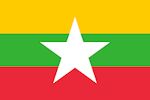
Die Democratic Karen Buddhist Army (DKBA, တိုးတက်သော ဗုဒ္ဓဘာသာ ကရင်အမျိုးသား တပ်ဖွဲ့) greift drei Flüchtlingslager für Karen (ကရင်လူမျိုး) in Thailand an und brandschatzt zwei davon. 10.000 Flüchtlinge werden dadurch obdachlos. Das dritte Lager konnte durch die Border Patrol Police (ตำรวจตระเวนชายแดน) vor der Brandschatzung gerettet werden.
1997-02
Erstes Heft von Cleo Thailand. "Launched in February 1997, CLEO Thailand advises on fashion, beauty, health, sports, travel and lifestyle." (http://www.fashionmodeldirectory.com/magazines/cleo-thailand/ . -- Zugriff am 2014-09-24)
Abb.: Titelblatt von Heft 2010-02
[Fair use]
1997-02-05
Innenminister Sanoh Thienthong (เสนาะ เทียนทอง, 1934 - ) gibt zu, dass die frühere Schönheitsköniging Jitra Tosakit, 48, seine Geliebte ist. Jitra war im Regierungsgebäude aufgetaucht und Sanoh hatte die Flucht ergriffen. Nun befürchtete er eine Untersuchung. Jitra sagt, dass es ihr darum geht, einen gleichen Status wie Sanohs Ehefrau zu bekommen.
Abb.: Sanoh Thienthong (เสนาะ เทียนทอง)
[Bildquelle: th.Wikipedia. -- Public domain]
1997-02-09

Der amerikanische Profigolfer Eldrick "Tiger" Woods (1975 - ) gewinnt in Asian Honda Classic im Thai Coutry Club. Tiger Woods ist der Sohn eines amerikanischen Soldaten und einer Thailänderin, die als Sekretärin am Joint US-Thai Command in Bangkok tätig war. Ministerpräsident Chavalit gibt Tiger Woods die thailändische Ehrenbürgerschaft.
Abb.: Eldrick "Tiger" Woods / von Murray Webb (1947 - ), 2006
[Bildquelle: Tiger Woods. 25 April, 2006.. Webb, Murray, 1947- :[Digital caricatures published from 29 July 2005 onwards (2006, 2007, 2008). Includes a selection of digital caricatures published from 2002 and up to July 2005.]. Ref: DCDL-0001362. Alexander Turnbull Library, Wellington, New Zealand. http://natlib.govt.nz/records/22698718. -- Zugriff am 2013-03-09. -- "You can copy this item for personal use, share it, and post it on a blog or website. It cannot be used commercially without permission"]
1997-02-13 - 1997-02-24

47. Internationale Filmfestspiele Berlin
Premiere des Films Fun Bar Karaoke (ฝันบ้าคาราโอเกะ) von Pen-Ek Ratanaruang (เป็นเอก รัตนเรือง, 1962 - ).
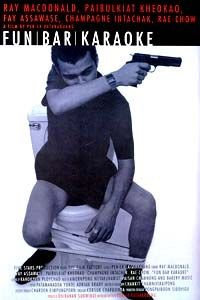
Abb.: Plakat
[Bildquelle: Wikipedia. -- Fair use]
|
"Fun Bar Karaoke (Thai: ฝันบ้าคาราโอเกะ or Fan ba karaoke, literally "dream crazy karaoke") is a 1997 crime-comedy directed by Pen-Ek Ratanaruang (เป็นเอก รัตนเรือง, 1962 - ). The film had its world premiere at the 1997 Berlin Film Festival for which Pen-Ek was credited as "Tom Pannet". It screened in the festival's Forum section.[1] PlotPu (ปู) is a young woman who is having some bad dreams. Her father, meanwhile, has fallen in love with a karaoke bar hostess girl named Yok who's the girlfriend of a mobster. A hitman named Noi is then dispatched to kill the father, and Pu ends up falling in love with Noi. Cast
[Quelle: http://en.wikipedia.org/wiki/Fun_Bar_Karaoke. -- Zugriff am 2013-03-19] |
1997-02-14
1997-02-24Am Valentinstag wollen mehr als 1000 Paare in Bang Rak (บางรัก, "Dorf der Liebe") heiraten.
"There are two theories about the district name Bang Rak. One theory suggests that the original name for the area which become Bang Rak was written in Thai as บางรักษ์ (also pronounced Bang Rak) meaning village of cure due to the presence of a famous hospital. Through time the Thai spelling was shortened to the current form, meaning village of love. The second theory by Phraya Anuman Ratchathon suggests that Rak refers a kind of plant and there was one of such plant in a canal in the district. Because of Bang Rak can mean village of love, now the district is the most popular place to register marriage especially on Valentine's Day in each year." [Quelle: http://en.wikipedia.org/wiki/Bang_Rak. -- Zugriff am 2011-12-22]
Abb.: Lage von Bang Rak (บางรัก, "Dorf der Liebe")
[Bildquelle: OpenStreetMap. -- Creative Commons Lizenz (Namensnennung, share alike)]
Abb.: Inbegriff der Romantik: Bang Rak (บางรัก, "Dorf der Liebe")
[Bildquelle: Sry85 / Wikipedia. -- GNU FDLicense]
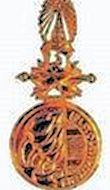
Zu National Artists (ศิลปินแห่งชาติ) werden ernannt:
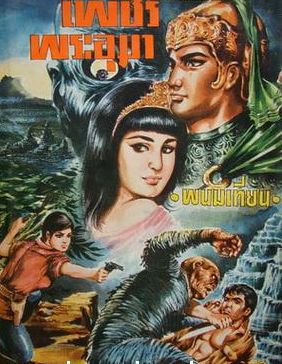
Abb.: Einbandtitel eines Buchs von Chatchai Visessuwanpoom (นายฉัตรชัย วิเศษสุวรรณภูมิ
= พนมเทียน = ก้อง สุรกานต์ = รพินทร์)
[Fair use]
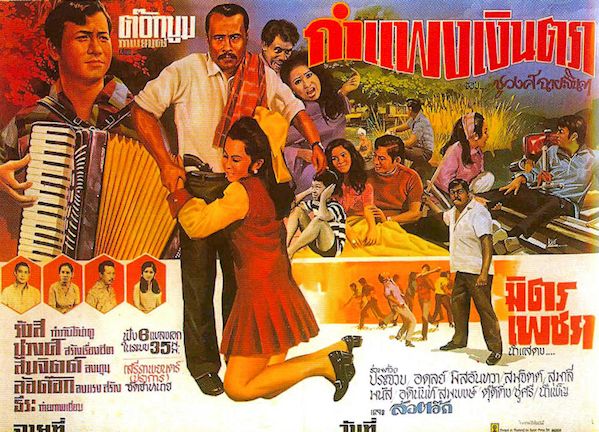
Abb.: Plakat des Films
กำแพงเงินตรา (1970)
mit Sompong Pongmitr (นายสมพงษ์
พงษ์มิตร)
[Fair use]
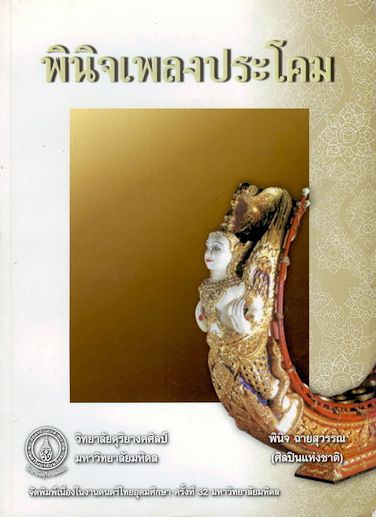
Abb.: Plakat für eine Aufführung von Pinit Chaisuwan (นายพินิจ ฉายสุวรรณ)
[Fair use]
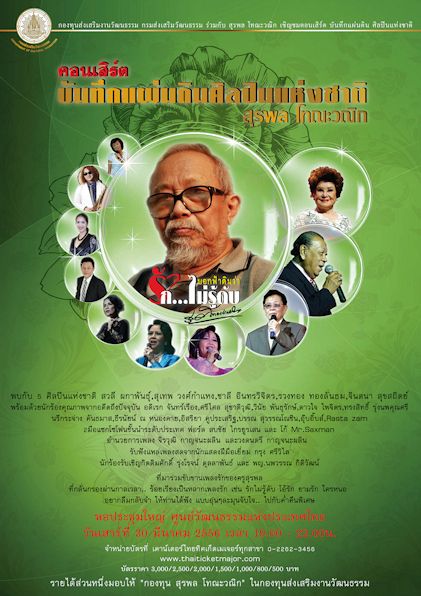
Abb.: Plakat für Surapol Tonawanik (นายสุรพล
โทณะวณิก), 2013
[Fair
use]
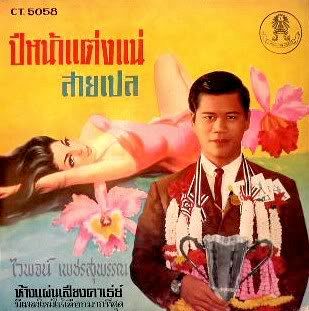
Abb.: CD-Titel von Waipote Sakulnee (นายไวพจน์ สกุลนี
= ไวพจน์ เพชรสุพรรณ)
[Fair use]
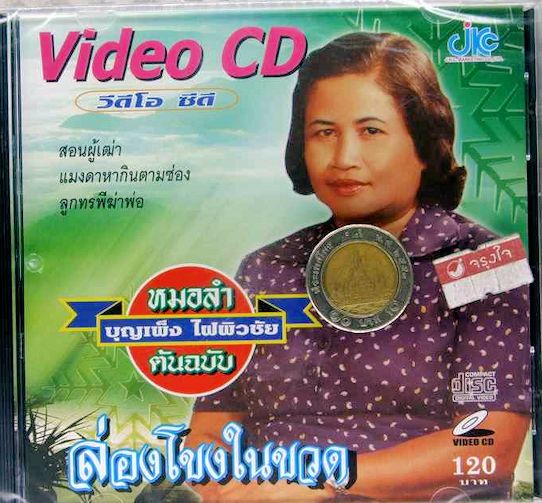
Abb.: VCD-Titel von Boonpeng Phaiphiewchai (นางบุญเพ็ง ไฝผิวชัย)
[Fair use]
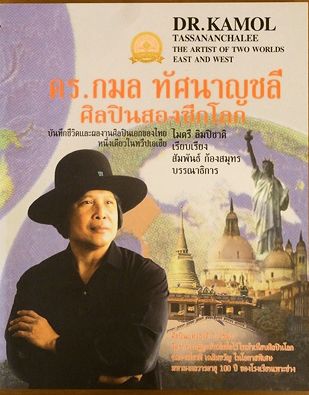
Abb.: Einbandtitel eines Buchs über Kamol Tasananchalee
(นายกมล ทัศนาญชลี)
[Fair
use]
1997-03
In Thailand Beginn der Finanz- und Wirtschaftskrise in Südostasien.
Abb.: Immer dasselbe: Spekulationsblasen / von Udo J. Keppler <1872 - 1956>, 1901
[Bildquelle: Puck <London, Großbritannien>. -- 1901-05-22 / Wikipedia. -- Public domain]
"Mit Asienkrise wird die Finanz-, Währungs- und Wirtschaftskrise Ostasiens der Jahre 1997 und 1998 bezeichnet. Sie begann im März 1997 in Thailand und griff auf mehrere asiatische Staaten über, insbesondere auf viele der so genannten Tiger- und Pantherstaaten. Die am stärksten betroffenen Länder waren Indonesien, Südkorea und Thailand. Auch in Malaysia, den Philippinen und Singapur machte sich die Krise bemerkbar, während die Volksrepublik China und Taiwan größtenteils unberührt blieben. Die gleichzeitige Wirtschaftskrise in Japan hatte ihre eigenen Ursachen, wurde aber durch die Asienkrise noch verstärkt.
Entstehung und Ursachen der KriseFür die Krise 1997/98 im asiatischen Raum wurden nachträglich von Experten mehrere Erklärungen gegeben. Wirtschaftspolitische Fehlentwicklungen wie maßlose Investitionen und Handelsbilanzdefizite sowie finanzpolitische Fehlentwicklungen wie exzessive Kreditaufnahme – auch in Fremdwährung – und institutionelle Defizite in den regionalen Finanzmärkten.[1][2][3][4] Während diese Erklärungsansätze eine selbstverschuldete Krise im Zusammenspiel mit einem Versagen der internationalen Finanzmärkte diagnostizieren, wurde von anderen Ökonomen der Internationale Währungsfonds ins Zentrum der Kritik gerückt.
KreditblaseIn Folge der Liberalisierung der Finanzsektoren asiatischer Staaten entstand in den neunziger Jahren ein Kreditboom in Asien. Das Wachstum des Kreditvolumens lag in dieser Zeit im Durchschnitt bei 8 bis 10 Prozent über den Wachstumsraten des BIP. Es entstanden nicht nur industrielle Überkapazitäten wie in Südkorea, sondern ein immer größerer Teil der Kredite wurde zum Kauf von Aktien und Immobilien eingesetzt. Die Folge war ein Anstieg der Aktienmärkte und ein starkes Ansteigen der Immobilienpreise um das bis zu Vierfache. Mit den steigenden Immobilien- und Aktienpreisen glaubten die asiatischen Banken gute Sicherheiten zu haben, was zu weiteren Kreditvergaben führte. Dieses Kapital floss wiederum in Aktien und Immobilien. Durch die daraus resultierenden Preissteigerungen entstand in einigen Bereichen eine spekulative Blase. Dieser „Teufelskreis“ aus Kreditvergabe und gestiegenem Wert der Sicherheiten hatte eine stark einseitige Ausrichtung der Kreditvergabe zur Folge. Ende 1997 lag der Anteil der durch Immobilien besicherten Kredite in Thailand, Indonesien und Malaysia zwischen 25 und 40 Prozent.[5] Dies machte die Banken gegenüber Preisrückgängen am Aktien- und Immobilienmarkt verwundbar.
Fehlende Fremdwährungsabsicherung
Abb.: Wechselkurse zur Deutschen Mark ausgewählter asiatischer Währungen in den Jahren 1995 bis 1999
[Bildquelle: Stephkoch / Wikipedia. -- GNU FDLicense]Weitere Probleme resultierten aus unterschiedlichen Laufzeiten und Währungen der aufgenommenen und vergebenen Kredite. Da die Banken von der günstigen Zinssituation auf den internationalen Finanzmärkten profitieren wollten, erfolgte die Verschuldung vielfach in US-Dollar oder Yen mit kurzen Laufzeiten. Die Kreditvergabe an inländische Kreditnehmer erfolgte meistens langfristig und in inländischer Währung. Kreditinstitute finanzierten langfristige Kredite mit Hilfe von kurzfristig aufgenommenem Geld. Aufgrund dieser Vorgehensweise kam es zu gravierenden Unterschieden bei Laufzeit und Währung zwischen den aufgenommenen und vergebenen Krediten.
Zu diesem Zeitpunkt wurde ein schwerwiegender Fehler begangen, weil die Finanzinstitute auf die enge Koppelung der heimischen Währung an eine Ankerwährung, zumeist den US-Dollar, und deren Stabilität vertrauten. Sie sahen keine Notwendigkeit, die Verbindlichkeiten in Yen oder Dollar gegen Wechselkursänderungen abzusichern. Durch die staatlich abgesicherten Wechselkurse schien das Wechselkursrisiko für die Aufnahme ausländischer Gelder vernachlässigbar und Devisenkredite waren aufgrund geringer Risikoprämien vergleichsmäßig günstig[6]. Sie verzichteten zu Gunsten höherer Gewinne auf die in derartigen Situationen notwendige Risikoabsicherung über die Terminmärkte. Durch dieses Vorgehen profitierten sie von der Schwäche des US-Dollars gegenüber dem japanischen Yen zwischen 1985 und 1995. Bis 1995 war diese Strategie sehr erfolgreich. Die südostasiatischen Staaten waren konkurrenzfähig und konnten ein stark exportgetriebenes Wachstum verbuchen. Als der Dollar gegenüber dem Yen, den europäischen Währungen und dem chinesischen Renminbi an Wert gewann, stiegen plötzlich die lokalen Währungen in realer Rechnung, was zu einer ernsthaften Verschlechterung der internationalen Wettbewerbsfähigkeit, verlangsamtem Export und somit zu einem gravierenden Leistungsbilanzdefizit führte.
Auslandsschulden überschritten WährungsreservenDas Hauptproblem dieser Finanzpolitik waren die kurzfristigen in Fremdwährung laufenden Kredite der asiatischen Banken, denen nur ein verhältnismäßig geringer Währungsreservenbestand gegenüberstand.[7] Die Krisenländer waren bei Eintreten der Krise und Fälligkeit der zuvor aufgenommenen Kredite nicht in der Lage, diese kurzfristig mit ausländischen Devisen zurückzuzahlen. Offizielle Angaben über die Währungsreserven zeigten ein verfälschtes Bild der wahren Situation. Die Währungsreserven waren viel zu hoch bewertet, weil Transaktionen an den Terminmärkten nicht berücksichtigt worden waren. Eine Reihe von Zentralbanken (bspw. die thailändische Zentralbank) versuchte, bei Auftreten der Finanzkrise über Transaktionen an den Terminmärkten die Kurse ihrer Währungen zu stützen, um eine Währungskrise abzuwenden.
Schwache regionale FinanzmarktstrukturenZusätzlich zu den bereits skizzierten Missständen gab es in den meisten Ländern keine oder eine nur unzureichend funktionierende Aufsichtsbehörde. Zudem verzichteten die Banken auf eine gründliche Risikobeurteilung bei der Kreditvergabe, und die Bonitätsprüfung der Kreditnehmer wurde stark vernachlässigt. Die Folge dieser Kreditvergabepraktiken war, dass viele der Banken eine viel zu geringe Eigenkapitalquote aufwiesen. Das Management der Finanzinstitute vertraute darauf, dass die Regierung sie unterstützen würde, sollte es tatsächlich zu Schwierigkeiten kommen. Die Fehler sind jedoch nicht nur beim Management der asiatischen Banken zu suchen, sondern die Krise wurden besonders verstärkt oder erst herbeigeführt durch ausländische Spekulanten, die angesichts der Warnsignale der Finanzmärkte auf ein Fallen der Währungskurse dieser Länder setzten und sie auf Termin verkauften.
Fehlverhalten der internationalen FinanzmärkteAls weiterer Grund für die Überschuldung der Institute und somit der einzelnen Staaten wurde das niedrige Zinsniveau in Japan und die damit verbundenen Anreizstrukturen zur Kreditaufnahme im asiatischen Raum angeführt. Viele Investoren wollten in dem Zukunftsmarkt Südostasien dabei sein und finanzierten ihre Engagements mit geringen Eigenmitteln und billigen Yen-Krediten. Auch im Westen herrschte die Meinung, dass die Regierungen in Asien, sollte es zu Problemen kommen, über die Ressourcen verfügen würden, um eventuelle Solvenzprobleme abzufangen. Als die Gläubigerbanken aber nicht mehr „stillhielten“, als die asiatischen Währungen und Vermögenswerte zunehmend verfielen, sondern ihre Forderungen fällig stellten, kam es zu einem massiven Abzug von Kapital aus diesen Ländern. Der führte wiederum zu einer Herabstufung der Kreditwürdigkeit dieser asiatischen Länder, was den weiteren Verkauf dort gehaltener Anlagen durch sicherheitsorientierte institutionelle Investoren zur Folge hatte. Zwangsläufig führten diese Verkäufe zu einem weiteren Verfall von Aktienmärkten und Währungen. Diese sich selbst verstärkende Kapitalflucht aus den Krisenländern war ein klassisches Koordinationsversagen. Für einen einzelnen Gläubiger war es rational, Forderungen möglichst schnell einzutreiben und so Verluste zu begrenzen. Weil aber alle gleichzeitig so handelten, standen sich die Gläubiger durch den rasant beschleunigten Werteverfall ihrer Anlagen schlechter.
Chronologische Übersicht wichtiger EreignisseWirtschaftliche Auswirkungen der Krise auf die asiatischen LänderDetails zur Asienkrise im Zeitverlauf März 1997 bis August 1999
1997 Indonesien Malaysia Südkorea Philippinen Thailand März 1997 Erste offizielle Verlautbarung bezüglich Problemen bei zwei nicht namentlich genannten Finanzintermediären und Start von Rekapitalisierungen dieser. April 1997 Die malaysische Nationalbank Bank Negara Malaysia begrenzt die Kreditvergabe der Banken im Hinblick auf Immobilien und Aktienkäufe. Im Zeitraum von März bis Juni 1997 erhalten 66 Finanzintermediäre nicht öffentlich Liquidität von der thailändischen Zentralbank. Signifikante Kapitalabflüsse. Mai 1997 Juni 1997 16 Finanzintermediäre werden geschlossen. Die Regierung gibt eine Spareinlagengarantie für alle Finanzinstitute. Juli 1997 Die Indonesische Rupiah gerät unter Druck und verliert an Wert gegenüber dem US-Dollar. Die Bank Negara Malaysia interveniert massiv, um den Wechselkurs des Malayischen Ringgits zu verteidigen. Wenig später wird die Währungskoppelung aufgegeben. Mehrere südkoreanische Banken werden von Ratingagenturen auf „negative outlook“ gesetzt Der Philippinische Peso darf in größerer Bandbreite um den US-Dollar schwanken. Die Währungskoppelung wird aufgehoben und der thailändische Baht verliert zwischen 15–20 Prozent an Wert. August 1997 Die Koppelung an den US-Dollar wird aufgehoben, daraufhin verliert die Indonesische Rupiah massiv an Wert. Die Regierung gibt eine Garantieerklärung für alle Verbindlichkeiten der südkoreanischen Banken ab. Ausländische Investoren stellen Kredite, die an die Banken ausgereicht wurden, fällig. Maßnahmen zur Stärkung des Finanzmarkts werden ergriffen. 42 Finanzintermediäre vorübergehend geschlossen. Ein 3-Jahres-Notfallarrangement mit dem Internationalen Währungsfonds, der Weltbank und weiteren bilateralen Quellen im Umfang von 17,1 Milliarden US-Dollar wird beschlossen September 1997 Oktober 1997 16 Banken werden geschlossen; es wird eine begrenzte Spareinlagensicherungsgarantie abgegeben. Weitere Bankschließungen kündigen sich an. November 1997 Ein 3-Jahres Notfallarrangement mit dem Internationalen Währungsfonds wird genehmigt. Das Hilfspaket des IWF, der Weltbank und weitere bilaterale Quellen von 48,1 Milliarden US-Dollar bis März 1999 wurde beschlossen. Der südkoreanische Won gerät unter Druck und die erlaubte Wechselkursschwankung weitet sich aus. Der Won verliert massiv an Wert. Die Korea Asset Management Corporation (KAMCO) Fondsgesellschaft wird gegründet, um notleidende Kredite zu übernehmen Regierungswechsel. Implementierung von Wirtschaftsreformen. Notfallerlässe der Regierung um den Finanzsektor zu entlasten und zu restrukturieren. Dezember 1997 Ein Bank Run beginnt. Die Hälfte aller Bankeinlagen werden abgezogen. Ein 3-Jahres Notfallarrangement mit dem Internationalen Währungsfonds wird genehmigt. Die Aktien von 14 Universalbanken werden vom Handel ausgesetzt und 2 große Banken werden nationalisiert. Regierungswechsel. Reformen des Finanzmarkts, Gründung der Finanzmarktaufsicht und Implementierung von Kontrollen. 56 vorübergehend geschlossene Finanzintermediäre werden endgültig geschlossen und abgewickelt. Die thailändische Nationalbank nationalisiert die Universalbanken. 1998 Indonesien Malaysia Südkorea Philippinen Thailand Januar 1998 Ein zweites IWF-Programm wird angekündigt. Die Indonesian Bank Restructuring Agency (IBRA) wird gegründet und gibt eine Generalgarantie für die indonesischen Banken ab. Maßnahmen zur Stärkung der aufsichtsrechtlichen Vorschriften werden angekündigt. Bank Negara Malaysia gibt eine Generalgarantie für alle Bankeinlagen ab. Abkommen Südkoreas mit externen privaten Gläubigern bezüglich Umschuldung von kurzfristigen Schulden. 10 von 14 vom börslichen Handel ausgesetzte Banken werden geschlossen. Die verbleibenden 20 Banken sind verpflichtet Restrukturierungspläne vorzulegen. Die thailändische Zentralbank interveniert bei zwei kommerziellen Banken; Aktionäre werden ausgeschlossen. Februar 1998 Zweifel über die Zukunft des Finanzsektors wachsen inmitten politischer Unsicherheit. Die Indonesische Rupiah wird weiter abgewertet und ein Currency-Board wird diskutiert Präsident Suharto wird wiedergewählt. Eine kommerzielle Bank wird von ausländischen strategischen Investoren gekauft. Kim Dae-jung und eine neue Regierung treten ihr Amt an. März 1998 Ein Programm zur Konsolidierung der Finanzen und zur Rekapitalisierung von Unternehmen und kommerzielle Banken wird angekündigt. 3-Jahres-Stand-By-Arrangement mit dem IWF wird vereinbart Neue Klassifizierung für Drohverluste und deren Rückstellungen wird eingeführt. April 1998 Die IBRA schließt 7 Banken und übernimmt 7 weitere. Vier der 20 Restrukturierungspläne werden abgelehnt und die 4 Banken geschlossen und abgewickelt. Mai 1998 Unruhen in Indonesien. Die Rupiah wird weiter abgewertet. Bank Runs intensivieren sich. Die Zentralbank Indonesiens Bank Indonesia muss Liquidität bereitstellen. Die IBRA übernimmt eine große Privatbank. Präsident Suharto tritt zurück. Die Bank von Thailand interveniert bei 7 Finanzintermediären; Aktionäre werden ausgeschlossen. Juni 1998 International Kreditgeber und indonesische Unternehmen einigen sich auf Umschuldungsprogramme für indonesische Unternehmen. Danaharta, eine staatliche Asset-Management-Gesellschaft, wird gegründet. Die südkoreanische Regierung schließt 7 kleinere Banken und zwei weitere Banken werden mit größeren Geschäftsbanken fusioniert. Neue Klassifizierung für Drohverluste und deren Rückstellungen wird eingeführt. Juli 1998 August 1998 Danamodal, eine Bankumstrukturierungs- und Sanierungsagentur wird gegründet. Finanzsektorumstrukturierungsplan angekündigt. Bereitstellung von öffentlichen Mitteln zur Unterstützung der Rekapitalisierung der Banken. Intervention bei zwei Banken und fünf Finanzierungsgesellschaften. Aktionärsanteile eliminiert. September 1998 Indonesiens Auslandsschulden bei institutionellen Investoren werden refinanziert. Bank Mandiri wird durch Fusion der vier größten staatlichen Banken gegründet. Pläne für eine gemeinsame Regierung angekündigt. Rekapitalisierungsmaßnahmen von privaten Banken. Kapitalkontrollen werden eingeführt, der Wechselkurs wird gekoppelt, die Offenlegungspflichten entspannt, und Maßnahmen zur Förderung der Kreditvergabe der Banken verabschiedet. Oktober 1998 Die Indonesische Regierung verabschiedet Änderungen des Bankengesetzes zur Stärkung der IBRA. November 1998 Dezember 1998 1999 Indonesien Malaysia Südkorea Philippinen Thailand Januar 1999 Februar 1999 Kapitalkontrollen werden durch Abgaben ersetzt. März 1999 Indonesiens Regierung schließt 38 Banken und die IBRA übernimmt sieben weitere. Für neun Banken werden staatliche Sanierungspläne angekündigt. April 1999 Schließung einer Joint Venture-Bank. Indonesiens Regierung kündigt einen Plan zur Rekapitalisierung von drei verstaatlichten insolventen Banken an. Mai 1999 Juni 1999 Acht Privatbanken werden mit öffentlichen und privaten Mitteln rekapitalisiert. Juli 1999 Indonesiens Regierung kündigt einen Plan zur Auflösung der IBRA Banken an. Die thailändische Regierung interveniert bei einer kleineren Privatbank und bereitet den Verkauf vor. August 1999 Verschmelzung der Bankeneinheiten der Bank Mandiri. Nach Jahren starken Wachstums sahen sich die asiatischen Länder 1997 mit einem plötzlichen Fall in tiefe Rezession konfrontiert. Damalige und zukünftige Investoren zeigten sich skeptisch über die Aussichten der Region und reagierten dementsprechend. Vor Beginn der Krise waren die „Tigerstaaten“ noch sehr erfolgreich auf den weltweiten Kapitalmärkten, wobei der US-Dollar-Markt ungefähr 33 Milliarden US-Dollar pro Jahr ausmachte. Doch der Vertrauensverlust der Investoren war enorm und 1998 sank der Wert auf nur noch 8 Mrd. US$ für asiatische Kreditnehmer. Die Krise zeigte sich besonders deutlich an der Wirtschaftsleistung des Jahres 1998. In diesem Jahr schrumpfte das BIP in Indonesien (-13,7 %), Thailand (-8,0 %), Südkorea (-5,5 %), Hongkong (-5,1 %) und auf den Philippinen (-0,5 %), nachdem diese Länder bis 1996 einen langjährigen Zuwachs verzeichnet hatten. In Japan sank das BIP ebenfalls um 2,8 %. Auch der Arbeitsmarkt brach zusammen. In Südkorea stieg die Arbeitslosenquote von 2 % (1996) auf 6,8 % (1998), in Malaysia von 2,5 % (1996) auf 8 % (1998) und in Indonesien auf 22 % (Anfang 1999).
Während sich die Asienkrise weiterhin verschlimmerte, bemühte sich der Internationale Währungsfonds, die negativen Konsequenzen einzugrenzen. Er stellte in den Jahren 1997/98 39 Milliarden US-Dollar für Thailand, Indonesien und Südkorea zur Verfügung. Zusätzlich bemühten sich zahlreiche Regierungen und internationale Organisationen, Hilfestellung zu leisten. Damals bestand Hoffnung, dass sich der Markt bald erholen würde. Die am meisten betroffenen Währungen, der thailändische Baht, die indonesische Rupiah und der südkoreanische Won, hatten bis Mitte 1998 einen Teil ihres Wertverlustes aufgeholt und sich stabilisiert. Ebenso stabilisierten sich die Exportzahlen wieder. Eine beruhigende Tatsache war, dass nicht alle Länder gleichermaßen betroffen waren. Die VR China war relativ immun gegenüber den direkten Auswirkungen der Krise. Der Yuan behielt seinen Wert, das Bruttoinlandsprodukt wuchs weiter an und die Exporte nahmen weiterhin kräftig zu. Zwar waren die Kapitalabflüsse von ausländischen Investoren auch in China beachtlich, doch die Auslandsverschuldung und das Haushaltsdefizit waren geringer als zum Beispiel in Thailand und Malaysia. Des Weiteren waren die Devisenreserven Chinas im Vergleich zu den von der Asienkrise am meisten betroffenen Ländern deutlich größer.[8]
Japan, das aus geographischer Lage heraus einen natürlichen Handelspartner und Investor für die asiatische Region darstellt, wurde im Vergleich zu den USA und Europa deutlich stärker von den negativen Auswirkungen der Krise getroffen. Die seit 1991 anhaltende Japankrise wurde durch die Asienkrise noch verstärkt. Als direkte Konsequenz wurde Japans Exportanstieg deutlich geringer und erstmals in diesem Jahrzehnt wuchs Japans Wirtschaft 1998 nicht mehr. Die japanische Wirtschaft geriet in eine Rezession.
Auswirkungen der Krise auf andere LänderDie Marktprognosen beim Ausbruch der Krise waren denkbar schlecht und verhießen einen gravierend negativen Effekt auf die gesamte Weltproduktion. Es gab Prognosen, die von einer Verringerung bis zu einem Drittel ausgingen. Tatsächlich entpuppten sich die direkten Effekte als wesentlich geringfügiger. Als Grund dafür ist der relativ geringfügige Exportanteil der USA und Europas in die asiatischen Länder, mit Ausnahme von Japan, zu nennen. So gingen zum Beispiel 1996 nur 2,5 % der US-amerikanischen Exporte nach Südostasien. Im Gegensatz dazu hatten die asiatischen Länder eine durchschnittlich hohe Exportquote von 36 % in die USA und nach Europa und standen so in einem engen Abhängigkeitsverhältnis.
Die USA konnten während der Ereignisse ihr Wirtschaftswachstum halten und gegen Ende 1998 sogar erhöhen. Gleichzeitig gelang es, die Inflation gering zu halten, die Konsumausgaben waren hoch und die Arbeitslosigkeit erreichte ein 30-Jahres-Tief von 4,3 %. Aber der Höhepunkt der positiven Entwicklungen für die USA war der Höhenflug des Dow Jones Index, der die 10.000er Marke überstieg und die europäischen Aktienmärkte mit auf Rekordhöhe zog.
Die Auswirkungen auf die EU-Wirtschaft hielten sich in Grenzen, obwohl die europäischen Investitionen in Asien einen Rückschlag erlitten. Der sekundäre und der tertiäre Bereich hatten die größten Schwierigkeiten, da eine Reihe von europäischen Industrieprodukten und Dienstleistungen für den asiatischen Markt bestimmt waren. Die Einbußen der Bundesrepublik Deutschland wurden, nach Aussage der Regierung, auf 10 Milliarden DM geschätzt. Die Wachstumsrate der deutschen Wirtschaft fiel um 0,25 % und die Arbeitslosenquote nahm um 0,1–0,2 % zu.[9]
Auswirkungen auf die BevölkerungDie sozialen Auswirkungen der Krise äußerten sich überwiegend im Anstieg der Arbeitslosenzahlen und starken Realeinkommeneinbußen. Nicht alle Einkommensklassen waren gleichermaßen betroffen. Der Anteil der Löhne und Gehälter am Gesamteinkommen sank und führte so zu Änderungen der Einkommensverteilung. Bewohner ländlicher Gebiete, die ihre eigenen Nahrungsmittel anbauten oder züchteten, hatten durch den Verkauf ihrer Erzeugnisse zu steigenden Preisen profitiert, während die städtischen Haushalte, die sich Nahrungsmittel zu erhöhten Marktpreisen kaufen mussten, negativ betroffen waren. Dementsprechend stieg die Armut in städtischen Gebieten stärker als in ländlichen Gebieten. Durch Kürzung der Sozialausgaben des Staates sank die Verfügbarkeit von Leistungen sowie die Qualität im Bildungs- und Gesundheitswesen und anderen öffentlichen Versorgungsleistungen. Auch die Investitionen der Privathaushalte in den Bereichen Bildung, Gesundheit, Ernährung und Familienplanung nahmen ab. In der Gesundheitsversorgung griffen viele Haushalte zur Selbsthilfe oder nahmen traditionellen Heiler, weniger eine moderne medizinische Versorgung. Private Krankenhäuser und Kliniken in Malaysia berichteten einen Rückgang zwischen 15 und 50 Prozent der Anzahl der Patienten in Behandlung. Die Kosten für Verhütungsmittel stiegen und eine große Anzahl von Frauen schied aus den Familienplanungsprogrammen aus. In Indonesien hatten bis dato die Teilnehmer der nationalen Familienplanungsprogramme die Kosten in vollem Umfang tragen müssen. Dementsprechend gehen Schätzungen davon aus, dass sich die Zahl der illegalen Abtreibungen und Kindstötungen deutlich erhöhte. [10]
Abklingen der Krise und ErholungDie wirtschaftliche Erholung von der Krise erfolgte in den meisten der betroffenen Ländern recht schnell.[1] Ein gutes makroökonomisches Management in der Stärkung der Stabilisierung der Finanzmärkte spielte dabei eine besondere Rolle. In den meisten asiatischen Ländern waren zwei Jahre später die realen und nominalen Zinssätze auf den Geldmärkten niedriger als vor der Krise 1997. Als der spekulative Druck auf die Währungen nachließ, fielen die Zinssätze in Südkorea, Thailand (Anfang 1998) und Indonesien (Mitte 1999). Die Kreditvergabe im Privatsektor wurde drastisch gesenkt und zog negative Auswirkungen auf den Privatkonsum nach sich, stabilisierte aber das Bankensystem.
In den Jahren 2005–2007 stieg das Bruttosozialprodukt jährlich im Durchschnitt von 8 %, so schnell wie vor der Krise. Diese Zahl berücksichtigt allerdings auch das Wachstum Chinas und Indiens.
Studien weisen darauf hin, dass die öffentliche Infrastruktur 2007, vor allem in Thailand und Indonesien, schlechter als ein Jahrzehnt zuvor zu Zeiten der Krise gewesen sei. Investitionsausgaben seien durch die wirtschaftliche und politische Unsicherheit gesunken und Unternehmen seien bezüglich Fremdkapitalaufnahme immer noch sehr zurückhaltend. Die Asian Development Bank fordert daher, dass die Regierungen viel mehr dazu beitragen könnten, dies zu ändern: Höhere Investitionen in Bildung und Infrastruktur, Unterbindung der Korruption und die Verbesserung der rechtlichen Rahmenbedingungen.[11]
Die Rolle des Internationalen WährungsfondsDer Internationale Währungsfonds führte in Indonesien, Südkorea und Thailand Programme durch, die Finanzierungshilfen beinhalteten, aber an Bedingungen bezüglich Strukturreformen und makroökonomischen Maßnahmen gebunden waren. [12]
In den Jahren 1997/98 zahlte er etwa 39 Milliarden US-Dollar Finanzmittel für Anpassungs- und Reformprogramme in Indonesien, Südkorea, Philippinen und Thailand. [13] Insgesamt wurden 85 Milliarden US-Dollar von bi- und multilateralen Organisationen zugesichert; dieser Betrag wurde aber nie vollständig ausgezahlt. Diese Finanzmittel wurden unter der Voraussetzung in Aussicht gestellt, dass die Geldpolitik in den jeweiligen Ländern gestrafft und damit ein weiterer Verfall der Wechselkurse eingedämmt würde, sowie einer restriktiveren Haushaltspolitik. Des Weiteren war die Freigabe der Finanzmittel an Strukturreformen gebunden, wozu insbesondere Vorschriften und das Einrichten von Überwachungskommissionen gehörten, die die Verschuldungs-, Effizienz- und Führungsprobleme im Banken- und Unternehmenssektor lösen sollten. Weitere Reformmaßnahmen sollten die sozialen Auswirkungen der Krise und der Haushaltskürzungen abschwächen und das Wirtschaftswachstum beleben.
„(…) erstens, das Versagen den Überhitzungsdruck der zunehmend in Thailand und vielen anderen Ländern in der Region sichtbar wurde und sich in großen Staatshaushaltfdefiziten, Immobilien- und Börsenblasen manifestierte, einzudämmen; zweitens, die zu lange Aufrechterhaltung des gekoppelten Wechselkursregimes, welches die externe Kreditaufnahme förderte und zu einer übermäßigen Wechselkursrisikoaussetzung sowohl im Finanz- als auch im Unternehmenssektor führte, und drittens, laxe aufsichtsrechtliche Vorschriften und Finanzmarktkontrolle, die zu einer drastischen Verschlechterung in der Qualität der Kreditportfolios der Banken führten.“
– Stanley Fischer, Erster stellvertretender Direktor des Internationalen Währungsfonds zu den internen Ursachen der Krise [14]
Das Hilfsprogramm für Thailand„Die Medizin, die der IWF verabreicht hat, war richtig. Er konnte nur nicht durchsetzen, daß die Patienten sie ordentlich nehmen.“
– Rudi Dornbusch: Interview in der FAZ [15]
Am 14. August 1997 wandte sich die Regierung Thailands mit einer Absichtserklärung (Letter of Intent) an den Internationalen Währungsfonds, in welcher Strukturprogramme beschrieben wurden, welche die thailändische Regierung beabsichtigte zu implementieren mit der gleichzeitigen Anfrage nach finanzieller Unterstützung. [16] Am 20. August 1997 genehmigte der IWF 4 Milliarden US-Dollar Finanzhilfe für einen Zeitraum von 3 Jahren. Primäres Ziel dieser Finanzierungshilfe sollte die Stabilisierung des Thailändischen Bahts sein. Die Finanzierungshilfe war mit mehreren Bedingungen verbunden, darunter eine Anhebung des thailändischen Leitzinses, Senkung der Staatsausgaben, Erhöhung der Mehrwertsteuer, weitreichende Privatisierungsmaßnahmen, Restrukturierung des Finanzsektors und schlussendlich die Aufgabe der Wechselkursbindung des Baht an den US-Dollar. [12]
Das Hilfsprogramm für SüdkoreaAm 4. Dezember 1997 stimmt der Internationale Währungsfonds einer Absichtserklärung der südkoreanischen Regierung bezüglich eines Finanzhilfeprogramms in Höhe von 58 Milliarden US-Dollar, wovon aber nur 21 Milliarden US-Dollar ausbezahlt wurden, für drei Jahre zu. Zu diesem Zeitpunkt war es die größte monetäre Finanzhilfe des Internationalen Währungsfonds an ein Land. Die Bedingungen dieser Finanzhilfe sahen unter anderem die kurzfristige Erhöhung des südkoreanischen Leitzinses, Reformen des hochverschuldeten Firmensektors und Umstrukturierungsmaßnahmen bezüglich der Laufzeiten von kurzfristigen Krediten vor. [12]
Das Hilfsprogramm für IndonesienIn den Jahren 1997/98 stellte der Internationale Währungsfonds 14,9 Milliarden US-Dollar Finanzhilfe für Indonesien zur Verfügung. Wirtschaftspolitische Maßnahmen, die an diese Finanzierungshilfe gebunden waren, beinhalteten Neustrukturierung und Schließung von Finanzinstituten, Bekämpfung der Korruption und mafiaähnlicher Strukturen, Freigabe des Rupiah-Kurses und die Liberalisierung des Handels. [12]
Kritik an den Aktionen des Internationalen WährungsfondsDer Internationale Währungsfonds bezeichnet seine Maßnahmen als erfolgreich und notwendig. Trotzdem ist die Rolle des IWF bis heute sehr umstritten, und die Aktionen des IWF während und nach der Asienkrise sind auf zahlreiche Kritik gestoßen, insbesondere von Kritikern aus den USA. Bis zu den Jahren 1997/98 hatte der IWF in mehr als 90 Entwicklungs- und Schwellenländer Strukturprogramme im Rahmen von Kreditvergaben „verordnet“. Kritik an den Auflagen, an den Prioritäten dieser Auflagen und der zu implementierenden Strukturänderungen (Liberalisierung der Märkte) kamen überwiegend aus dem Bereich der Politischen Linken. Im amerikanischen Kongress äußerte sich allerdings auch die Politische Rechte zur Zeit der Asienkrise kritisch zu den Aktionen des IWF. Sie warf dem IWF vor, auf Kosten der Steuerzahler US-amerikanische Banken und Anleihegläubiger vor weitreichenden Verlusten bewahrt zu haben. Teilweise forderten die Kritiker aus beiden politischen Lagern aus unterschiedlicher politischer Motivation die Abschaffung des IWF. [17]
Die Kritik, unabhängig von der politischen Motivation, am Internationalen Währungsfonds kann wie folgt zusammengefasst werden:
- Induzierung von „moral hazard“ seitens des IWF:
- Die Gläubiger der asiatischen Finanzintermediäre wurden verführt, erhöhte Risiken einzugehen, da sie angeblich damit rechnen konnten, dass bei Zahlungsschwierigkeiten der IWF einspringen würde, wie er es in anderen Krisen zuvor getan hatte.
- Die auferlegten Maßnahmen im Rahmen der Asienkrise waren falsch:
- Die Anhebung von Zinssätzen und Steuern einhergehend mit der Kürzung von Staatsausgaben während einer Rezession seien kontraproduktiv. [18]
- Fokussierung auf wirtschaftspolitische Maßnahmen unter Vernachlässigung von sozialen Maßnahmen
- Die vom IWF verordneten Strukturprogramme basierten auf rein fiskalischen Kriterien, wie zum Beispiel Geldwertstabilität, dem Vorrang der Schuldentilgung und ausgeglichenen Leistungsbilanzen. So wurden Länder indirekt dazu „gezwungen“ beispielsweise Investitionen ins Bildungssystem oder Subventionen für Grundnahrungsmittel einzustellen. Soziale Unruhen wie etwa in Indonesien seien die Folge. [19]
- Die IWF-Agenda setze die Souveränität und die demokratische Kontrolle der abhängigen Staaten außer Kraft
- Durch die Liberalisierung der Finanzmärkte hätten sich die Staaten vollständig dem Weltmarkt ausgeliefert. Zur Verhinderung von Kapitalflucht bei einer Krise oder zur Verteidigung ihrer Währung gegen Spekulationen, könnten sich diese Staaten nicht durch gesetzliche Regelungen, sondern nur durch eigenes Agieren am Markt, etwa durch Stützungskäufe für die eigene Währung, helfen. [19]"
[Quelle: http://de.wikipedia.org/wiki/Asienkrise. -- Zugriff am 2011-12-19]
Abb.: Hat mit seinen verantwortungslosen Währungsspekulationen wesentlich zur asiatischen Finanzkrise beigetragen, jetzt mit seinen Stiftungen "Wohltäter der Menschheit": Spekulant George Soros (1930 - )
[Bildquelle: World Economic Forum/swiss-image.ch/Photo by Sebastian Derungs. -- http://www.flickr.com/photos/15237218@N00/4309799402. -- Zugriff am 2012-02-15. -- Creative Commons Lizenz (Namensnennung, share alike)]

Infolge der Finanzkrise fallen die Einnahmen des Crown Property Bureau (CPB, สำนักงานทรัพย์สินส่วนพระมหากษัตริย์) um 75%. Die meisten Firmen des CPB können keine Dividenden zahlen.
1997-03
Die Presse macht den Salween logging scandal bekannt:
"The Salween logging scandal, as it came to be known, had a different twist. This time, it was Thai trees that were being logged, more than 10,000 of them in the Salween conservation area [อุทยานแห่งชาติสาละวิน] alone, but they were being laundered mostly through Burma. Here’s how the scheme worked: After the trees were cut down in Thailand, they were sent to the border; there, Thai firms that had been granted logging concessions in Burma stamped them as being of Burmese origin. The logs would then be floated down the Salween River and back into Thailand through official checkpoints. Ironically, even the logs confiscated by Thai authorities as being of dubious origin were then sold by the Forest Industry Organization, a state enterprise, thus giving the government continued incentive to see the forests cut down.
Abb.: Lage der Salween conservation area [อุทยานแห่งชาติสาละวิน]
[Bildquelle: OpenStreetMap. -- Creative Commons Lizenz (Namensnennung, share alike)]The scandal was uncovered by numerous members of the Thai press—a couple of my colleagues at the Nation, Kamol Sukin and Chang Noi, wrote several articles about it—who also managed to reveal details about the Por Liang [พ่อเลี้ยง] Som, the godfather allegedly involved in the affair. Poor, and poorly educated, but determined to be rich, Por Liang Som started off by working in a gambling den, where he learned that
"the only way to win is to cheat. "
After a stint in the trucking business, he made his fortune by acting as an agent for logging concessionaires in Burma, where he got to know many of the powerful ethnic resistance leaders. He then went into the logging business for himself, easing his way by distributing bribes right and left. A list seized from one of his relatives contained the names of officials from the police, army, local administration, customs, immigration, forestry, and national parks departments.
Although the logging scandal was first publicized in March 1997, the logs would continue to flow so long as Chavalit remained prime minister because his administration still handed out permits allowing the concessionaires to import logs from Burma. It was only after the onset of the Asian financial crisis—triggered by the devaluation of Thailand’s currency in July 1997—that Chavalit’s government fell. Many of the details of the Salween operations were then exposed, including the stockpiling of 13, 000 teak logs at the sawmills of one of Som’s business partners. A senior member of the RFD [Royal Forest Department], Prawat Thanadkha [ประวัติ ถนัดค้า], was caught attempting to hand the subsequent prime minister, Chuan Leekpai [ชวน หลีกภัย, 1938 - ], a bribe of 5 million baht in a bid to have the logs released from custody. Prawat was subsequently punished, but Som was never arrested because of a lack of evidence. The Democrats sought to document Chavalit’s links to the scandal, but he denied the accusations and was never charged with malfeasance. Following an election in January 2001, Chavalit has once again been named defense minister. One of his first official acts upon taking office was to make a trip to Burma."
[Quelle: Fahn, James David <1965 - >: A land on fire : the environmental consequences of the Southeast Asian boom. -- Boulder : Westview, 2003. -- 365 S. ; 24 cm. -- ISBN 0-8133-4267-8. -- S. 140f.. -- Fair use]
1997-03

Eine 88-köpfige Wirtschaftsdelegation unter Leitung des Baden-Württembergischen Ministerpräsidenten Erwin Teufel (1939 - ) kommt nach Thailand.
Abb.: Erwin Teufel, 1996
[Bildquelle: Archiv für Christlich-Demokratische Politik (ACDP) / Wikimedia. -- Creative Commons Lizenz (Namensnennung, share alike)]
1997-03-04
Premiere des Film จักรยานสีแดง (Red Bike Story) von Euthana Mukdasanit (ยุทธนา มุกดาสนิท, 1952 - )
Abb.: Filmplakat
[Bildquelle: th.Wikipedia. -- Fair use]
1997-03-16
Es erscheint:
New amphetamine epidemic. -- In: Bangkok Post. -- 1997-03-16
Abb.: Lage von Samut Sakhon [สมุทรสาคร]
[Bildquelle: OpenStreetMap. -- Creative Commons Lizenz (Namensnennung, share alike)]
"Shortly after midnight at Samut Sakhon [สมุทรสาคร], two men dressed in combat uniform wait in a dark corner of the fishing port of Maha Chai [มหาชัย]. They gesture to the labourers, who are in tatters. The workers weigh the fresh fish at around 1:00am. When the employees are gathered, one of the men takes a sheet of paper from his pocket and calls them by name. As the workers identify themselves, the man glances at his list and asks a labourer to confirm a figure: "Have you ordered 20 tablets?" The labourer indicates yes and the other dealer takes out 20 tablets from a paper bag and gives them to the labourer, while his colleague continues to confirm orders. The two uniformed men work for the fishery, and the tablets they distribute are methamphetamine. A close collaborator of the boss of the company states that the latter authorizes his staff to buy the pills wholesale and sell them to the other employees. "In the profession, this is not unknown to anyone. Each labourer would buy yaa baa [ยาบ้า] at 80 baht per pill (2 euros). But they earn around 100 baht daily and spend 80 for a tablet! How could they manage to live on 20 baht per day?" To make it more affordable the employer might buy yaa baa at the wholesale price and sell it to his workers at "cost" — around 20 baht per pill. "They need these pills", he states. "Otherwise they would not be able to withstand the effort... without these pills, we could not finish in time and meet our commitment to our clients. All the fishermen on board, and not only the fishermen of this fishery, are ‘hooked’ on." [Zitiert in: Chouvy, Pierre-Arnaud <1971 - > ; Meissonier, Joël <1973 - >: Yaa baa : production, traffic, and consumption of methamphetamine in mainland Southeast Asia. -- Singapore : Singapore Univ. Pr,, 2004. -- 210 S. : Ill. ; 23 cm. -- ISBN 978-9971-69-278-0. -- Originaltitel: Yaa Baa : production, trafic et consommation de méthamphétamine en Asie du Sud-Est continentale (2001). -- S. 71. -- Fair use]

Die Bangkok Post gibt folgende Zahlen für den Wertzuwachs einer Pille Ya Ba [ยาบ้า] an:
Myanmar: 8 bis 16 Baht
Thailand Großhandel: 20 bis 25 Baht
Thailand Endverbraucher: 70 bis 120 Baht
Abb.: Wertzuwachs einer Pille Ya Ba [ยาบ้า] (in Baht), 1997-03
1997-03-16
Es erscheint:
Cabrera, Jaime ; Vanaspong Chitraporn: Confessions of a young yaa baa addict. -- In: Bangkok Post. -- 1997-03-16
"On a wall behind a moto-taxi stand in their locality, Nat and one of his friends observed graffiti "Yaa baa [ยาบ้า] sold here". Nat decided to check it out. The wall overlooked a poultry slaughterhouse where the workers were provided amphetamine pills. They worked very late so that fresh chicken could be delivered in the early hours of the morning. Seeing their unfamiliar faces, the dealer approached them. He sold them three tablets at 55 baht each (around 1.4 euros). The normal price was only 30 to 40 baht each but they paid more because they were newcomers." "Without his being aware of it, the trap began to close behind Nat. Playing truant from school, he spent his time figuring out how he could get hold of his daily quota of yaa baa and the greater part of his day in the company of other consumers. His family found out that he no longer attended classes. To escape official checks, he went from apartment to apartment, spending one day with one friend, another day with another. Slowly Nat’s social circle restricted itself to those whom he befriended to get a supply of methamphetamine.
The police arrested him while he was in the company of a dealer, though he did not have a single pill on himself. Nevertheless, he was forced to sign a statement to the contrary. The door had closed once and for all behind Nat. In his own eyes and his family’s eyes, he was no longer a student. He now had a different face, that of a drug addict."
"The retailer at the poultry slaughter-house began to trust Nat and permitted him to take more tablets. Nat could make a profit of 20 baht (around 59 euro cents) on each pill that he could sell at 70 baht. In addition, he received free tablets for his personal consumption. Most of his customers were adolescents who had already tried it. He learnt from other dealers how to act in total safety. He started selling methamphetamine tablets in the evenings to drivers who were waiting to deliver chicken at the market. He hid his reserves in a truck tyre. His income varied from 3,000 to 5,000 baht per week depending upon the number of dealers and the type of pills that he sold."
[Zitiert in: Chouvy, Pierre-Arnaud <1971 - > ; Meissonier, Joël <1973 - >: Yaa baa : production, traffic, and consumption of methamphetamine in mainland Southeast Asia. -- Singapore : Singapore Univ. Pr,, 2004. -- 210 S. : Ill. ; 23 cm. -- ISBN 978-9971-69-278-0. -- Originaltitel: Yaa Baa : production, trafic et consommation de méthamphétamine en Asie du Sud-Est continentale (2001). -- S. 93, 97f., 98. -- Fair use]
1997-04

Bei einer Diskussion über Homosexualität sagt ein katholischer Priester (ein Thai), dass an der Schule, an der er tätig ist, man Homosexualität stillschweigend duldet. Toms, dees und gay (ทอม, ดี้, เกย์) werden toleriert solange sie damit nicht so an die Öffentlichkeit treten, dass die Schule dazu Stellung nehmen müsste.
1997-04-05

Gruppen von Umweltschützern protestieren gegen das Yadana-Erdgas-Pipeline-Projekt. Die Pipeline soll vom Yadana Erdgas-Feld im Meer vor Myanmar zu einem Kraftwerk in Ratchaburi (ราชบุรี) führen. Sie würde den Sai Yok Nationalpark (อุทยานแห่งชาติ ไทรโยค) zertrennen.
Abb.: Yadana-Erdgas-Pipeline
[Bildquelle: ©Total in Myanmar : a sustained commitment. -- http://burma.total.com/en/publications/sustained_commitment.pdf. -- Zugriff am 2011-12-22. -- Fair use]
"The Yadana gas field is an offshore gas field in the Andaman Sea. It is located about 60 kilometres (37 mi) offshore to the nearest landfall in Myanmar. Description
The Yadana gas field contains more than 150 billion cubic meters of natural gas and has an expected field life of over 30 years. In 2009, the output averaged 780 million cubic feet per day (22×106 m3/d).
The gas field lays around 1,300 metres (4,300 ft) beneath the seabed in the water depth around 40 metres (130 ft). The offshore production complex consist of two remote wellhead platforms, one bridge-linked wellhead platform, a production platform, a living quarters platform, and a medium compression platform. Produced gas is exported through two pipelines. The first, 409 kilometres (254 mi) long pipeline runs 346 kilometres (215 mi) underwater from Yadana to Daminseik at the coast. From there, a 63-kilometre (39 mi) onshore section runs to the Thai border. The onshore section crosses a region inhabited by the Karen (ကရင်လူမျိုး), a minority ethnic group hostile to the government. Construction of the pipeline was completed in 1998 and it cost US$1.2 billion. This pipeline has capacity of 500 million cubic feet per day (14×106 m3/d).
The second, 287 kilometres (178 mi) long pipeline pipeline from the Yadana to Yangon was inaugurated on 12 June 2010. The 24-inch (610 mm) pipeline has a 151 kilometres (94 mi) long offshore and 136 kilometres (85 mi) long onshore sections.[5] The pipeline has capacity of 150 million cubic feet per day (4.2×106 m3/d).
Project companyThe Yadana gas field and pipelines are operated by Total S.A., a French energy group, with Chevron Corporation, a United States-based company, as its junior partner along with PTT (ปตท.), a Thai state-owned oil and gas company, and Myanmar Oil and Gas Enterprise (MOGE), a state-owned enterprise of Myanmar. Operator of the gas field is Total. Total has working interest of 31.2%, Chevron 28.3%, PTT 25.5%, and MOGE 15%.
ControversyThe Yadana project has been subject to much criticism in the international community, particularly because companies of democratic nations invested in a regime that has been noted for its human rights violations. The State Law and Order Restoration Council came under intense scrutiny for their human rights abuses during the construction of the pipeline and their involvement in the project led to a lawsuit being filed against Unocal. Evidence collected by ERI (EarthRights International) suggests that villagers are routinely forced to work in various guises. One former soldier from the 273 battalion said : "We were told it was a 30 year project and the country got half, and the foreigners got half of the benefit. We ask the villagers to carry shell ammunition, food and supplies. During the portering the soldiers treat porters not so good. I do not want to mention about these bad things so much since I myself I have done it to these people as well at that time." Troops routinely force civilians to work for them and those who refuse are often beaten, tortured or sometimes killed. Since early 2009 Burmese soldiers have ordered villagers to build a new police camp. "The Yadana project ushered in the Burmese army and the Burmese army continues to provide security for the companies and the project. The Total company has been complicit in abuses," said Matthew Smith of ERI.
The 2006 documentary Total Denial depicted the controversy surrounding the construction of the Yadana pipeline."
[Quelle: http://en.wikipedia.org/wiki/Yadana. -- Zugriff am 2011-12-22]
1997-04-11
Tod des Unterhaltungsmedien-Moguls Pradit Kaljaruek, 70, (ประดิษฐ์ กัลย์จาฤก), Mit-Gründer der Kantana Group Public Company Limited (บริษัท กันตนา กรุ๊ป จำกัด).
Abb.: Pradit Kaljaruek (ประดิษฐ์ กัลย์จาฤก)
[Bildquelle: http://www.kantana.com/kantanainstitute/2010-01-25-08-20-33/2010-01-25-08-21-07/2010-01-25-08-21-43. -- Zugriff am 2011-12-22. -- Fair use]
"Kantana Group Public Company Limited (Thai: บริษัท กันตนา กรุ๊ป จำกัด bor-rí-sàt gan-dtà-năa gróop jam-gàt) is a film and television production company based in Bangkok, Thailand. It is one of Thailand's oldest and largest film studios. The company's post-production facilities, including the joint-venture Oriental Post, are a major Asian hub for film processing and editing. The company is also known for its animation work, which includes the 2006 feature film Khan Kluay (ก้านกล้วย). History
Kantana began in 1951 as a radio drama troupe founded by Pradit ประดิษฐ์ กัลย์จาฤก and Somsook Kaljaruek (สมสุข กัลย์จาฤก). The company branched out into television in 1958 with the drama series “Ying Kor Mee Hua Jai”.
The company has since expanded to include the production of feature films, commercials and documentaries.
StructureThe business operations of the company and its subsidiaries are divided into three core areas: television production, film and post production, and "edutainment" and government relations.
Television Family and variety programsFamily and variety shows are produced for Thai television channel 5 (สถานีวิทยุโทรทัศน์กองทัพบกช่อง 5, Royal Thai Army TV), BBTV Channel 7 (สถานีโทรทัศน์สีกองทัพบกช่อง 7) and TITV (สถานีโทรทัศน์ไอทีวี). The shows include the cartoon series, "The Adventure of Khan Kluay".
Drama seriesAround 18 drama series, or lakorns (ละคร) are produced for BBTV Channel 7 and TITV.
Film Kantana Animation StudioKantana Animation produced the first Thai computer-animated feature film in 2006, Khan Kluay (ก้านกล้วย), which took three years and cost 150 million baht to make. Khan Kluay was the top film at the Thailand box office in 2006, earning 91 million baht, and winning several awards. Also, a Khan Kluay television series was created for BBTV Channel 7. Kantana Animation was spun off into its own subsidiary in 2007, Kantana Animation Studio Company, Limited.
Post-productionKantana is a major hub for film post-production services in Asia. Kantana's film lab provides overlay subtitling, negative cutting, color analysis, digital intermediate processing, optical effects, sound transfer, film cleaning and film print copying. The facility has provided lab work on such films as Memoirs of a Geisha, Superman Returns, Casino Royale and dozens of Thai feature films.
The company's sound studio provides audio dubbing and mixing services for feature films, television shows and commercials, including recording, sound effects, foley, sound design and voice dubbing/ADR. Kantana was the first Thai company to received permission from Dolby Laboratories to record sound under the Dolby.
Oriental PostOriental Post Company, Ltd., which is 50-50 joint venture by Kantana and Loxley Video Post, provides digital post production facilities. The services include digital compositing in PAL, NTSC, HD 24p in multi-format, telecine, digital editing and special effects creation. Using digital intermediate technology, Oriental Post's services also include film processing, scanning conforming, color correction, offline and online editing, digital effects, computer graphics and audio recording to film printing. The company has provided post-production work on the films of Wong Kar-wai, 2046 and My Blueberry Nights."
[Quelle: http://en.wikipedia.org/wiki/Kantana_Group. -- Zugriff am 2011-12-22]
1997-04-11
Premiere des Films Dang Bireley's and Young Gangsters (2499 อันธพาลครองเมือง) von Nonzee Nimibutr (นนทรีย์ นิมิบุตร, 1962 - )
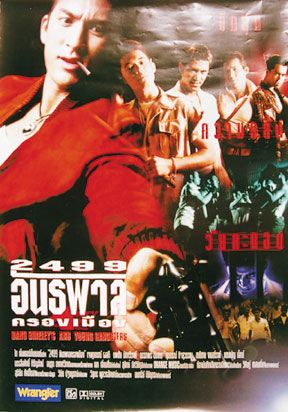
Abb.: Plakat
[Bildquelle: Wikipedia. -- fair use]
|
"Dang Bireley's and Young Gangsters (Thai: 2499 อันธพาลครองเมือง or 2499 Antapan Krong Muang) is a 1997 crime drama film about young Thai gangsters in 1950s Thailand. Featuring John Woo-style (吳宇森, 1946 - ) heroic bloodshed, it was the debut film from director Nonzee Nimibutr (นนทรีย์ นิมิบุตร, 1962 - ) and was the first screenplay by director and screenwriter Wisit Sasanatieng (วิศิษฏ์ ศาสนเที่ยง, 1963 - ). The 2499 in the Thai title refers to the year in the Buddhist calendar (พ.ศ.) when the story starts, corresponding to the Gregorian year 1956. PlotDang (แดง), the son of a prostitute, growing up in 1950s Thailand, compensates for his inferiority complex by boosting up his ego. At the age of 13, he killed a man who was beating his mother. By age 16, he had dropped out of school and started his own protection racket. With his right-hand man Lam Sing, Dang is highly protective of Piak, and is also friends with Pu Bottle Bomb and Pu's sidekick Dum. Dang attracts the attention of a young night club singer named Wallapa, who pressures Dang to stop being a gangster and live a normal life. Dang's mother also wishes that he would stop being gangster and ordain as a Buddhist monk. Dang carves out more territory by killing the local crime boss Mad Dog. Meanwhile, Piak is caught up in a fight between rival school gangs, instigated by Pu and Dum. The fight leads to a falling out between Dang and Pu the beginning of a feud between the two. Following a military coup all the gangsters must leave Bangkok for the countryside, Dang, Lam Sing and Piak go to work for Sergeant Chien, a former policeman turned gangster, at Chien's bar and gambling den next to an American military base. Chien needs more muscle to go against a rival operator, Headman Tek, and brings in Pu and Dum against Dang's wishes. Pu and Dum stir up trouble in the gambling den and reignite their feud with Dang's gang although Sergeant Chein tries to calm them. However Sergeant Chien is killed by a motorcyclist gunman and Pu and Dum go to work with his rival Headman Tek forcing Dang's gang out of the town. Dang returns to Bangkok, where he plans on fulfilling his mother's wishes and taking his oath as a monk. However Pu and Dum show up during the ceremony and gun battle ensues. Lam Sing is killed, and Dang and Piak are wounded, but Pu and Dum are killed. In an epilogue, narrated by an older Piak, it turns out Dang survived his wounds, but continued as a gangster seemingly unable to become a monk, and then died in a car accident at age 24, just like his idol James Dean. Cast
[Quelle: http://en.wikipedia.org/wiki/Dang_Bireley%27s_and_Young_Gangsters. -- Zugriff am 2013-03-19] |
1997-04-12

Cham (ជនជាតិចាម / จาม) Muslime in Ban Krua (บ้านครัว) in Bangkok beten darum, dass Allah die Initiatoren eines Schnellstraßen-Projekts der Expressway und Transit Community bestraft. Die Muslime hatten ihr Land von Rama I. erhalten. Der Schnellstraße müssten viele der alten Holzhäuser sowie die Moschee und der Friedhof weichen. Die Cham-Muslime begraben die Plazenta Neugeborener unter dem Haus, dadurch sind sie besonders dem Boden verbunden. 2001 wird das Projekt aufgegeben.
Abb.: Lage von Ban Krua (บ้านครัว)
[Bildquelle: OpenStreetMap. -- Creative Commons Lizenz (Namensnennung, share alike)]
1997-04-18
Ministerpräsident Chavalit geißelt Pattaya (พัทยา) als "Thailands größte Quelle des Bösen". Drogen, Geldwäscherei, Prostitution und andere gefährliche Tätigkeiten beherrschten Pattaya und müssten angegangen werden, um dem Verderb der Thai-Gesellschaft vorzubeugen.
Abb.: Lage von Pattaya (พัทยา)
[Bildquelle: OpenStreetMap. -- Creative Commons Lizenz (Namensnennung, share alike)]
Abb.: Der Kampf gegen das Böse war wohl nicht sehr heftig: Pattaya (พัทยา), 2008
[Bildquelle: Lynhdan Nguyen. -- http://www.flickr.com/photos/lynhdan/2365365923/. -- Zugriff am 2011-12-22. -- Creative Commons Lizenz (Namensnennung, keine Bearbeitung)]
1997-04-26
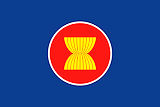


Thailand lehnt die Forderung der USA ab, den Beitritt Myanmars zu ASEAN (Association of Southeast Asian Nations) wegen Menschenrechtsverletzungen abzulehnen. Der Regierungssprecher sagt: "Was auch immer geschieht. Thailand bleibt bei seinem Standpunkt, den Beitritt Myanmars zu unterstützen, da wir den Beschluss schon gefasst haben."
1997-04-27

Volunteer Defence Corps (Or Sor) (อส. = กองอาสารักษาดินแดน), die das Flüchtlingslager Ta Per Poo, Amphoe Umphang (อุ้มผาง), Provinz Tak (ตาก)), bewachen, kämpfen gegen bewaffnete Angehörige der Democratic Karen Buddhist Army (တိုးတက်သော ဗုဒ္ဓဘာသာ ကရင်အမျိုးသား တပ်ဖွဲ့). Dabei töten sie einen der Angreifer.
Abb.: Lage von Amphoe Umphang (อุ้มผาง)
[Bildquelle: OpenStreetMap. -- Creative Commons Lizenz (Namensnennung, share alike)]
1997-04-28 + 1997-07-30

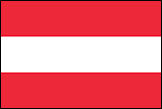
In Die Presse <Wien> erscheinen Interviews mit dem birmanischen Drogenkönig Khun Sa (ခွန်ဆာ / 張奇夫 / จันทร์ จางตระกูล, 1934 - 2007). Darin sagt er4, dass er in Immobilien, Hotels in Yangon (ရန်ကုန်) sowie eine Autobahn Yangon-Mandalay (ရန်ကုန် - မန္တလေး) investiert.
1997-05

Eine vereinte Truppe von Volunteer Defence Corps (Or Sor) (อส. = กองอาสารักษาดินแดน), Border Patrol Police (ตำรวจตระเวนชายแดน) und Thahan Phran (ทหารพราน, Rangers) zwingen bei Mae Hong Son (แม่ฮ่องสอน) 430 Flüchtlinge der Pa-O Volksgruppe (ပဢူဝ်း) zur Rückkehr nach Myanmar.
Abb.: Lage von Mae Hong Son (แม่ฮ่องสอน)
[Bildquelle: OpenStreetMap. -- Creative Commons Lizenz (Namensnennung, share alike)]
Abb.: Pa-O (ပဢူဝ်း), Myanmar
[Bildquelle: Brian Snelson. -- http://www.flickr.com/photos/exfordy/1460808206/in/photostream/. -- Zugriff am 2012-09-30. -- Creative Commons Lizenz (Namensnennung)]
1997-05

Ab jetzt ist das Volunteer Defence Corps (Or Sor) (อส. = กองอาสารักษาดินแดน) für die Sicherheit in allen vier Flüchtlingslagern in der Provinz Tak (ตาก)
Abb.: Lage der Provinz Tak (ตาก)
[Bildquelle: CIA. -- Public domain]
1997-05

Ismail Ali fordert eine gesonderte Gesetzgebung für alle Muslime Thailands.
1997-05-04
Anant Rueangsukudom, Provinzrat von Amphoe U Thong (อู่ทอง) und Bauunternehmer (Firma Tancharoen), wird erschossen. Hinter dem Mord steckt vermutlich Khiang Matrasri, Dorfbürgermeister in Amphoe U Thong und Bauunternehmer (Matrasri Jakrakon). Sechs Tage später wird Khiang als Rache erschossen. Die Firmen von Anant und Khiang hatten geschäftliche Konflikte.
Abb.: Lage von Amphoe U Thong (อู่ทอง)
[Bildquelle: OpenStreetMap. -- Creative Commons Lizenz (Namensnennung, share alike)]
1997-05-07
Wegen schwerer Proteste der Beschäftigten verschiebt die Regierung den Plan, die Electricity Generating Authority of Thailand (EGAT, การไฟฟ้าฝ่ายผลิตแห่งประเทศไทย) zu privatisieren.
1997-05-14
Gründung der Luftfahrtallianz Star Alliance. Gründungsmitglieder sind:
Abb.: ®Logo
Air Canada
United Airline
Lufthansa
Scandinavian Airlines
Thai Airways
1997-06-17
Wanchat Padungrat (วันฉัตร ผดุงรัตน์) gründet das Internet-Forum pantip.com
Abb.: Screenshot, 2009-06-09
[Fair use]
"Pantip.com is a popular Thai-language website and discussion forum. As of April 2008, Pantip.com was one of the top 10 websites in Thailand, along with rival Thai portal Sanook.com.[1] Discussions about Thai politics and current events on Pantip.com's topic boards are often cited in the Thai press, particularly in such English-language newspapers as the Bangkok Post and The Nation, as a gauge of the public's mood about various issues. At the beginning, the site gained its popularity from people's misunderstanding of its name which is similar (and identical in English spelling) to Bangkok's famous IT shopping center, Pantip Plaza, however it is in no way affiliated with the mall [2] (The name is actually styled in Thai as พันทิป, meaning a thousand tips.) Nevertheless, there is a significant IT-related community there."
[Quelle: http://en.wikipedia.org/wiki/Pantip.com. -- ZUgriff am 2012-06-09]
1997-07
Bersatu (the United Front for the Independence of Patani) beginnt die Operation Falling Leaves: großer Terror gegen Sicherheitskräfte und Zivilisten.
1997-07-01


Die britische Kronkolonie Hong Kong (香港) wird Sonderverwaltungszone (特别行政区) Chinas.
Abb.: Lage von Hong Kong (香港)
[Bildquelle: OpenStreetMap. -- Creative Commons Lizenz (Namensnennung, share alike)]
Abb.: Hong Kong (香港)
[Bildquelle: CIA. -- Public domain]
1997-07-07
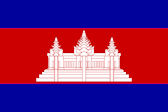
Nach zwei Tagen Straßenschlachten in Phnom Penh (ភ្នំពេញ) ist der Machtkampf zwischen den beiden Ko-Ministerpräsidenten Kambodschas, Prinz Norodom Ranariddh (នរោត្ដម រណឬទ្ធិ, 1944 - ) und Hun Sen (ហ៊ុន សែន, 1952 - ), entschieden. Hun Sen erklärt Ranaridh für abgesetzt, weil dieser mit den Roten Khmer (ខ្មែរក្រហម) kollaboriert und einen Bürgerkrieg geplant habe.
Abb.: Lage von Phnom Penh (ភ្នំពេញ)
[Bildquelle: OpenStreetMap. -- Creative Commons Lizenz (Namensnennung, share alike)]
Abb.: Hun Sen (ហ៊ុន សែន), 2010
[Bildquelle: World Economic Forum / Ms. Sikarin Thanachaiary. -- http://www.flickr.com/photos/15237218@N00/4673087667. -- Zugriff am 2011-12-12. -- Creative Commons Lizenz (Namensnennung, share alike)]
"Samdech Hun Sen (* 4. April oder 5. August 1952 in Peam Koh Sna) ist ein kambodschanischer Politiker. Er ist ein hoher Funktionär der Kambodschanischen Volkspartei (គណបក្សប្រជាជនកម្ពុជា, französisch Parti populaire cambodgien, abgekürzt PPC) und seit 1985 Ministerpräsident. Der Namensteil Samdech wurde ihm 1993 von König Norodom Sihanouk als Ehrentitel verliehen. Von 1975 bis 1977 diente Hun Sen als Kommandeur eines Rote-Khmer-Regiments in der Verwaltungszone Ost. 1977 floh er vor dem Hintergrund ideologischer Auseinandersetzungen innerhalb der Khmer Rouge (ខ្មែរក្រហម) nach Vietnam. 1978 wurde Hun Sen Gründungsmitglied der United Front for the Salvation of Kampuchea (UFNSK) in Vietnam. 1979 kehrte er mit dem Einmarsch vietnamesischer Truppen nach Kambodscha zurück. Hun Sen wurde anschließend Außenminister in der von Hanoi installierten Regierung unter Heng Samrin (ហេង សំរិន) in Phnom Penh. 1985 löste Hun Sen Heng Samrin als Regierungschef ab und baute fortan seine Machtposition zielstrebig aus.
1993 erzielte die Partei Hun Sens bei den von der UN beaufsichtigten Wahlen nur das zweitbeste Wahlergebnis, dennoch wurde er neben Prinz Norodom Ranariddh (នរោត្ដម រណឬទ្ធិ, dem „ersten Ministerpräsidenten“) zum sogenannten „zweiten Ministerpräsidenten“ ernannt. Vor dem Hintergrund heftiger politischer Auseinandersetzungen zwischen Hun Sen und Prinz Norodom Ranariddh setzte Hun Sen diesen 1997 durch einen Coup kurzerhand ab und herrschte fortan allein. Auch 2003 gelang es Hun Sen nicht, mit der CPP die Mehrheit zu erringen und eine Regierung zu bilden. Erst 2004 kam es unter Vermittlung von König Norodom Sihanouk zu einem politischen Kompromiss und zur Bildung einer handlungsfähigen Regierung unter Führung von Hun Sen.
Obwohl Hun Sen bis 1977 Mitglied der kommunistischen Roten Khmer gewesen ist, haben Nachforschungen ihm bislang keine Verbindungen zu den Morden unter Leitung von Pol Pot (ប៉ុល ពត) nachweisen können. Dennoch gilt Hun Sen als Mann ohne Skrupel, der auch vor Morden an politischen Rivalen nicht zurückschreckt. Dank Hun Sens enger Verbindungen zum Big Business, unter anderem zum berüchtigten Tycoon Teng Bunma, sollen nicht unerhebliche Gelder in seine Tasche bzw. die der CPP fließen. Trotz seiner offensichtlichen Verstrickung in Korruption und die Plünderung des Landes durch den illegalen Export von Edelhölzern wurde Hun Sen vom Ausland bislang unterstützt, da er derzeit der einzige Politiker ist, der die Sicherheitskräfte, Justiz und Verwaltung unter Kontrolle hat und damit Kambodscha eine gewisse Stabilität zu gewährleisten vermag.
Im Hinblick auf das seit Jahren geplante Internationale Rote-Khmer-Tribunal wird Hun Sen vorgeworfen, die Anklage und Verurteilung der am Genozid der Jahre 1975–1979 beteiligten Khmer-Rouge-Funktionare bewusst seit Jahren verzögert zu haben. Auf Veranlassung Hun Sens wurden bereits mehrere führende Khmer-Rouge-Politiker, unter anderem Khieu Samphan (ខៀវ សំផន), Ieng Sary (អៀង សារី), amnestiert.
Privatleben„Ich würde dieses Tribunal lieber scheitern lassen, als zusehen, wie ein neuer Bürgerkrieg in diesem Land ausbricht. Daran gibt es nichts zu rütteln. Das Tribunal soll sich auf die früheren Anführer der Roten Khmer konzentrieren, die bereits angeklagt sind.“
– Hun Sen: Schlußplädoyers im ersten Rote-Khmer-Prozeß (nicht mehr online verfügbar), tagesschau.de, 23. November 2009
Mit seiner Frau Bun Rany hat er drei Söhne und zwei Töchter. 1988 adoptierte das Paar noch eine 18 Tage alte Tochter.[1] Über die Familie wird so gut wie nie berichtet.
Am 29. Oktober 2007 berichtete Hun Sen erstmals öffentlich über eine Familienangelegenheit bei einer Schulabschlussfeier, weil es viele lesbische Fälle in Kambodscha gebe. Die Adoptivtochter studierte in den Vereinigten Staaten, konnte ihr Studium aber nicht beenden und kehrte nach Kambodscha zurück. Die 19-Jährige habe jetzt eine Frau und brachte ihre Mädchen mit ins Haus. Die Familie habe Angst, dass diese einmal Bomben oder Gift mitbringen könnten und weiters, dass sie ein Teil des Vermögens beanspruchen könnte. Hun Sen plane bei Gericht zu beantragen, sie aus der Familie auszuschließen, damit sie keinen Teil des Vermögen oder Erbes erhält. Er sei enttäuscht, dass er zwar eine ganze Nation erziehen könne, nicht aber seine eigene Adoptivtochter. Gleichzeitig verwendete er die Gelegenheit, um an die Eltern und die Gesellschaft zu appellieren, Homosexuelle nicht zu diskriminieren und auch nicht Transvestiten zu nennen, denn die meisten seien gute Menschen. In den Medien dominierte die Essenz, dass er seine Tochter wegen ihrer Homosexualität aus der Familie ausschließen wolle. Frauenrechtlerinnen kritisierten Hun Sen für seinen Plan.
Literatur
- Markus Karbaum: Kambodscha unter Hun Sen. Informelle Institutionen, Politische Kultur und Herrschaftslegitimität. Münster 2008. ISBN 978-3-8258-1645-2.
- Harish C. Metha: Hun Sen – Strongman of Cambodia. Singapore 1999. ISBN 981-218-074-5.
[Quelle: http://de.wikipedia.org/wiki/Hun_Sen. -- Zugriff am 2011-12-19]
Abb.: Norodom Ranariddh (នរោត្ដម រណឬទ្ធិ)
[Bildquelle: Wikipedia. -- Fair use]
"Prinz Norodom Ranariddh (នរោត្ដម រណឬទ្ធិ, * 2. Januar 1944 in Phnom Penh) ist ein khmer Politiker. Leben
Norodom Ranariddh ist der zweitälteste Sohn des ehemaligen kambodschanischen Königs Norodom Sihanouk (នរោត្ដម សីហនុ) und ein Halbbruder von König Norodom Sihamoni (នរោត្ដម សីហមុនី).
In den 1960er-Jahren studierte er öffentliches Recht im französischen Aix-en-Provence und promovierte 1974 in diesem Fach. Von Februar 1992 bis Oktober 2006 war er Vorsitzender der FUNCINPEC-Partei (គណបក្ស ហ្វ៊ុនស៊ិនប៉ិច). Von September 1993 an, als die Monarchie in Kambodscha wiederhergestellt wurde, übte er - gemeinsam mit Hun Sen von der Kambodschanischen Volkspartei- das Amt des Ministerpräsidenten aus. Im Juli 1997 wurde er von Hun Sen aus diesem Amt gedrängt. Damit war allerdings seine politische Karriere keineswegs beendet, denn im November 1998 wurde er zum Präsidenten der kambodschanischen Nationalversammlung gewählt. Von diesem Amt trat er im März 2006 zurück, nachdem die Kambodschanische Volkspartei ein neues Gesetz durchgesetzt hatte, wonach Anträge das Parlament nur noch mit einer einfachen statt mit Zweidrittelmehrheit passieren können und somit die Koalition der FUNCINPEC mit der Volkspartei nicht länger notwendig war. Nachdem er am 18. Oktober 2006 vom bisherigen Generalsekretär der Partei, Nhiek Bun Chhay, als Parteivorsitzender abgelöst worden war, schloss er sich der relativ unbedeutenden Khmer Front Partei (KFP) an, welche am 16. November desselben Jahres in „Norodom-Ranariddh-Partei“ (NRP) umbenannt wurde. Letztendlich wurden er und zwei seiner Unterstützer als Folge dieser Aktionen am 12. Dezember 2006 aus der Nationalversammlung und dem Senat ausgeschlossen und verloren ihre parlamentarische Immunität. Ihre bisherigen Sitze werden von anderen Vertretern der FUNCINPEC besetzt. Nach ersten Schätzungen zur Regionalwahl vom 2. April 2007 konnte Ranariddhs neue Partei keine Sitze in den Regionalvertretungen gewinnen.
Nachdem sein Vater im Oktober 2004 abgedankt hatte, wurde von Norodom Ranariddh aufgrund seiner Popularität erwartet, dass er diesem als König nachfolgen würde, was er aber ablehnte. Im selben Monat bestimmte er als Mitglied des neunköpfigen Thronrates Norodom Sihamoni als neuen König.
Norodom Ranariddh ist verheiratet mit Norodom Marie Ranariddh und Vater von drei Kindern."
[Quelle: http://de.wikipedia.org/wiki/Norodom_Ranariddh. -- Zugriff am 2011-12-19]
1997-07-08

Seine Majestät, der König erhält den "Special Award" von den Southeast Asian Write Awards für seine Werke
"Nai In Phu Pit Thong Lang Pra" (นายอินทร์ ผู้ปิดทองหลังพระ, A man called intrepid),
"Tito" (ติโต) und
"The story of Mahajanaka" (พระมหาชนก).
Abb.: Special Award der S.E.A. Write Awards, 1997-07-08
1997-07-11
Brand des Royal Jomtien Resort Hotel in Pattaya (พัทยา). 81 Tote, 70 Verletzte. Die Notausgänge waren verschlossen. Die Hotelbesitzer erhalten Ausreiseverbot und rechtliche Schritte werden eingeleitet.
Abb.: Lage von Pattaya (พัทยา)
[Bildquelle: OpenStreetMap. -- Creative Commons Lizenz (Namensnennung, share alike)]
1997-07-11 - 2004-07-11

George Tenet (1953 - ) ist Direktor des CIA.
Abb.: George Tenet
[Bildquelle: Wikipedia. -- Public domain]
1997-07-23

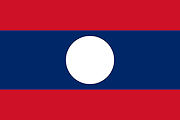

Laos und Myanmar werden Mitglied der ASEAN. Die geplante Aufnahme Kambodschas wird wegen der dortigen Unruhen verschoben.
Abb.: ASEAN-Staaten 1997
[Bildquelle: CIA. -- Public domain]
1997-07-31
Tod des Filmemachers Vichit Kounavudhi (วิจิตร คุณาวุฒิ, geb. 1922).
"Vichit Kounavudhi (Thai: วิจิตร คุณาวุฒิ, 1922-01-23 –1997-07-31, born in Chachoengsao (ฉะเชิงเทรา), Thailand) was a Thai film director and screenwriter. His works include the docudrama Son of the Northeast (ลูกอีสาน). BiographyEarly career
Vichit graduated from Vajiravudh College (วชิราวุธวิทยาลัย) in 1946 and started working as a journalist under the pen name Kounavudhi (คุณาวุฒิ). He got into filmmaking in 1950, when he was offered the villain's role in Fa Kamnod.
He then started working as a screenwriter, writing the dialogue for an adaptation of Wannaboon Withayakom's Phrom Bandan. His first screenplay was Santi-Weena, an acclaimed drama directed by Tawee "Kru Marut" Na Bangchang. It went on to competition in the 1955 Asia Film Festival in Tokyo, where it won several awards, including best cinematography for cinematographer Rattana Pestonji (รัตน์ เปสตันยี, 1908 - 1970).
Vichit started directing in 1958 and made 23 films until he retired in 1989. He had a string of action films in the 1960s and early '70s. Several starred legendary leading man Mitr Chaibancha (มิตร ชัยบัญชา, 1934 - 1970). He also made several films with actor Adul Dulyarat.
Later filmsIn the 1970s, Vichit was among the filmmakers who highlighted social problems in their films. His 1978 drama, Mia Luang (เมียหลวง), or First Wife, examined the issue of men taking mistresses or a mia noi (เมียน้อย, second wife).
His next film, 1979's Khon Phukao (คนภูเขา), or Mountain People, was an adventure tale about a young hill-tribe couple. It included a documentary-style introduction of the various ethnic groups in northern Thailand.
Look Isan (ลูกอีสาน), or Son of the Northeast was shot in a similar documentary style to Mountain People. Set in Thailand's rural northeast in the 1930s, Look Isan is a sympathetic depiction of a hard-scrabble life, with vivid wildlife photography and some rousing action sequences. It is regarded as Vichet's best film.
His 1985 film, Her Name is Boonrawd (ผู้หญิงคนนั้นชื่อบุญรอด), was a look back at the Vietnam War days and the prostitution scene around Utapao air base, where US Air Force troops were based. In it, a spirited young woman struggles to earn an honest living and find true love with one of the American officers.
In 1983, Vichit was awarded an honorary doctorate in Communication Arts by Chulalongkorn University (จุฬาลงกรณ์มหาวิทยาลัย) and was honored in 1987 by Thailand's National Culture Commission as a National Artist (ศิลปินแห่งชาติ).
LegacyIn 2005, the Bangkok International Film Festival included four films by Vichit in a retrospective: First Wife, Mountain People, Son of the Northeast and Her Name is Boonrawd. The festival also gave its annual Lifetime Achievement Award to Vichit, presenting it to his widow.
The festival program noted that: "Vichit Kounavudhi is regarded today as a master of the Thai motion picture industry - one of the greatest inspirations to later generations of filmmakers, praised as a genius of directing, screenwriting and editing. What makes his films special is not sophisticated technique, but an exceptional clarity and concision."
Partial filmography
- Operation Bangkok (เสน่ห์บางกอก, 1966)
- Top Secret (1967)
- First Wife (เมียหลวง, Mia Luang) (1978)
- Mountain People (คนภูเขา, Khon Phukao) (1979)
- Son of the Northeast (ลูกอีสาน, Look Isan) (1982)
- Her Name is Boonrawd (ผู้หญิงคนนั้นชื่อบุญรอด, 1985)"
[Quelle: http://en.wikipedia.org/wiki/Vichit_Kounavudhi. -- Zugriff am 2012-06-16]
nach 1997-07
Der Song The floating Baht (เงินบาทลอยตัว) des Luk Thung (ลูกทุ่ง) Sängers Ploen Phromdaen (เพลิน พรหมแดน, 1939 - ) wird zum Hit.
Der Song (anderer Sänger) auf Spotify:
URI: spotify:track:1RgmkBniqWvOAXOy9EbFIe
URL: https://open.spotify.com/track/1RgmkBniqWvOAXOy9EbFIeKünstlerlink auf Spotify:
URI: spotify:artist:1XP5ht9alZg5xd0hFbCSRz
URL: https://open.spotify.com/artist/1XP5ht9alZg5xd0hFbCSRz
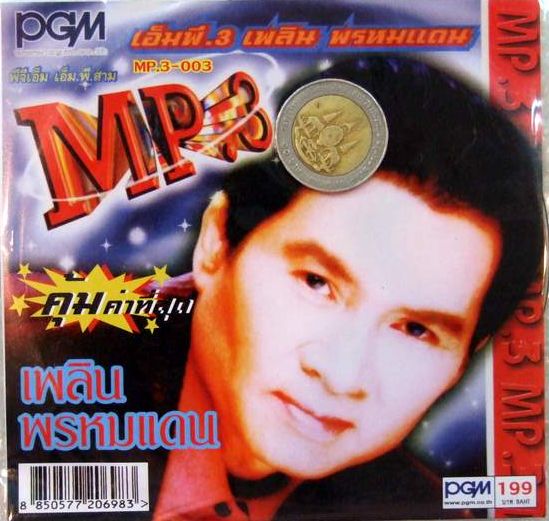
Abb.: MP3-Titel
[Fair use]
1997-08
Die Thai-Ausgabe des Cleo-Magazins enthält einen Artikel: "Ungewollte Schwangerschaft - wo ist die Lösung?". Es werden sichere Formen des Schwangerschaftsunterbruchs genannt sowie Kontaktadressen.
Abb.: Titelblatt von Cleo Thailand, 2012-09
[Fair use]
1997-08-01
Beginn der Sendungen von ลูกทุ่ง เอฟ.เอ็ม. [Lukthung FM], einem Radiosender, der ausschließlich der Musikgattung Lukthung (ลูกทุ่ง) gewidmet ist.
Abb.: Cover einer CD von ลูกทุ่ง เอฟ.เอ็ม. [Lukthung FM]
[Bildquelle: th.Wikipedia]
1997-08-10
Indienststellung des Flugzeugträgers der Thai Marine (กองทัพเรือไทย), HTMS Chakri Naruebet (เรือหลวงจักรีนฤเบศร).
Abb.: HTMS Chakri Naruebet (เรือหลวงจักรีนฤเบศร), 2001
[Bildquelle: PH3 ALEX C. WITTE, USN / Wikimedia. -- Public domain]
"Die HTMS Chakri Naruebet (thail.: เรือหลวงจักรีนฤเบศร – Aussprache: [rʉa lŭaŋ ʤàk-riː ná-rʉ́-bèt]) ist ein Multifunktionsträgerschiff der thailändischen Marine. Technik und Geschichte
Der Flugzeugträger wurde von 1994 bis 1997 auf der Bazan-Werft in Spanien gebaut. Das Schiff ähnelt dem spanischen Flugzeugträger Príncipe de Asturias. Insgesamt ist der Träger jedoch kleiner und verfügt über modernere Kommunikations- und Aufklärungssysteme und eine andere Antriebsanlage (CODOG-Antrieb). Er kann sowohl als Flugzeug- und Hubschrauberträger (für U-Jagd bzw. Angriffsoperationen) wie auch für amphibische Operationen genutzt werden. Zudem dient die Chakri Naruebet für repräsentative Aufgaben und hat daher Räumlichkeiten für die königliche Familie an Bord.
Das Bordgeschwader umfasst V/STOL-Flugzeuge, für die das Deck am Bug als Rampe ausgeführt ist. Außerdem kommen von dem 174 × 27 Meter großen und mit zwei je 20 Tonnen tragenden Aufzüge ausgestatteten Deck des leichten und vielseitigen Trägers auch amerikanische S-70B Seahawk-Hubschrauber für die U-Abwehr zum Einsatz.
Seit der Indienststellung 1997 war das Schiff kaum im Einsatz. Finanzielle und personelle Probleme zwangen die Marine immer wieder, das Schiff im Hafen zu lassen. Insgesamt nahm der Flugzeugträger bislang lediglich an zwei Manövern teil und war einmal als Hilfsschiff bei einer Hochwasserkatastrophe im Einsatz."
[Quelle: http://de.wikipedia.org/wiki/HTMS_Chakri_Naruebet. -- Zugriff am 2011-12-01]
1997-08-28
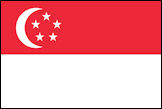
Aus Angst vor einer Abwertung des Baht kommt es in ganz Südostasien zu Panikverkäufen von Baht. Die Monetary Authority of Singapore und die Bank of Thailand (ธนาคารแห่งประเทศไทย) intervenieren mit Käufen, um den Baht nicht zu abrupt stürzen zu lassen.
1997-09
Inbetriebnahme des 28.000 km langen Meeres-Glasfaser-Kabelsystems FLAG (Fiber-Optic Link Around the Globe). Es verbindet Großbritannien mit Japan und viele Stationen dazwischen, u.a. Satun (สตูล) und Songkhla (สงขลา)
1997-09-02

Das Unterrichtsministerium erlaubt das Tragen von islamischer Kleidung an staatlichen Schulen.
Abb.: Muslimische Schülerinnen, Südthailand, 2004
[Bildquelle: Lucky B. -- http://www.flickr.com/photos/johnyb42/2537932891/. -- Zugriff am 2014-08-25. -- Creative Commons Lizenz (Namensnennung, keine kommerzielle Nutzung, share alike)]
1997-09-06

Beerdigung von Diana, Princess of Wales (geb. 1961), geborene The Honourable Diana Frances Spencer, geschiedene Gattin von
His Royal Highness The Prince Charles Philip Arthur George, Prince of Wales and Earl of Chester, Duke of Cornwall, Duke of Rothesay, Earl of Carrick, Baron of Renfrew, Lord of the Isles, Prince and Great Steward of Scotland, Royal Knight Companion of the Most Noble Order of the Garter, Extra Knight of the Most Ancient and Most Noble Order of the Thistle, Knight Grand Cross of the Most Honourable Order of the Bath, Member of the Order of Merit, Knight of the Order of Australia, Companion of the Queen's Service Order, Royal Chief Grand Companion of the Order of Logohu, Member of Her Majesty's Most Honourable Privy Council, Aide-de-Camp to Her Majesty
Das thailändische Königshaus ist nicht vertreten.
Abb.: Leichenzug für Diana, Princess of Wales ohne Beteiligung des Thai-Könighauses, 1997-09-06
[Bildquelle: Jialiang Gao / Wikipedia. -- GNU FDLicense]
1997-09-11
Die Ratchabhat Institute (สถาบันราชภัฏ) nehmen das Verbot, Homosexuelle aufzunehmen zurück.
"The Institute misunderstood and used the wrong word. That’s why it seemed to violate human rights. What they meant to screen was ‘sexually abnormal people,’ not ‘sexual deviants’" (Bangkok Post, September 11, 1997). [Zitiert in: Sinnott, Megan J.: Toms and dees : transgender identity and female same-sex relationships in Thailand. -- Honolulu : University of Hawaii Pr., 2004. -- 261 S. : Ill. ; 24 cm. -- ISBN 0824828526. -- Zugl. Diss., Univ. of Wisconsin - Madison, 2002. -- S. 200]
1997-09-15
Nidhi Eowseewong (นิธิ เอียวศรีวงศ์,, 1940 - ) und andere Mitglieder der Chiang Mai University (มหาวิทยาลัยเชียงใหม่) gründen die virtuelle Midnight University (มหาวิทยาลัยเที่ยงคืน) als gebührenfreie, informelle Alternative zum traditionellen Universitätssystem.
Webpräsenz: http://www.midnightuniv.org/. -- Zugriff am 2011-12-22
Abb.: Screen-shot
"Midnight University is a virtual university for free public education. It contains over 1,500 scholarly articles and has a discussion forum. Former rector of the university is late Somkiat Tangnamo (สมเกียรติ ตั้งนโม). On the cause of Thailand 2006 coup, the university's website was temporarily shut down after the management of the university and scholars from Chiang Mai University conducted a protest against the junta's draft interim charter (รัฐธรรมนูญแห่งราชอาณาจักรไทย (ฉบับชั่วคราว) พุทธศักราช 2549). Kasian Tejapira (.เกษียร เตชะพีระ) of Thammasat University (มหาวิทยาลัยธรรมศาสตร์) claimed the website was "the foremost free and critical educational and public intellectual website in Thailand. The shutdown is not only a huge loss to academic and intellectual freedom in Thai society, but also the closure of a free forum for the contention of ideas so as to find a peaceful alternative to violent conflict in Thailand". Kraisorn Pornsuthee ICT Ministry permanent secretary said he did not know about the shutdown of the website and would ask for details from his officials."
[Quelle: http://en.wikipedia.org/wiki/Midnight_University. -- Zugriff am 2011-12-22]
1997-09-20

Ein Helikopter mit 21 Personen des Gefolges der Königin stürzt bei einem Gewitter der Grenzregion zu Malysia ab: 14 Tote. Die Königin ist mit insgesamt 5 Helikoptern auf dem Heimweg von einem ländlichen Entwicklungsprojekt der Königin in der Provinz Narathiwat (นราธิวาส). Die Königin befindet sich in einem der anderen Helikopter. Unter den Toten ist die Privatsekretärin der Königin, Suprapada Kasemsant (ท่านผู้หญิง สุประภาดา เกษมสันต์, 1920 - 1997)
Abb.: Lage der Provinz Narathiwat (นราธิวาส)
Abb.: Einbandtitel: Suprapada Kasemsant (สุประภาดา เกษมสันต์)
1997-09-28 + 1997-10-02
In der populären Talkshow Cho Chai (เจาะใจ) von Royal Thai Army Radio and Television (Channel 5 - ททบ.5) offenbart eine Gruppe spiritistischer Medien aus der Provinz Chanthaburi (จันทบุรี) die Betrügereien von Medien im chinesischen Chi Gong (Ji Gong - 济公 / จี้กง) Kult.
Abb.: Ji Gong - 济公 / จี้กง
[Fair use]
"Cho Chai’s [เจาะใจ] two-part series on the problem of fraud in Thai spirit-medium cults appeared on September 28 and October 2,1997, when a group of spirit mediums from Chantaburi [จันทบุรี] Province were invited to appear on the program and expose the fraudulent practices of spirit mediums. The mediums belong to the cult of Chi Gong [Ji Gong - 济公/ จี้กง], a deity in popular Chinese and Taiwanese religion. Chi Gong is widely regarded in Taiwan as a healer and possessor of mediums. In Thailand, Chi Gong is a Chinese deity known for his supernatural ability to solve almost all human suffering. Chuchat Ngamkan (who was dubbed “Chuchat Chi Gong” by the Thai press following his appearance on national television) and leaders of the Chi Gong cult, are experienced and respected mediums with an especially large following in the country’s east-coast provinces of Chonburi [ชลบุรี], Chantaburi [จันทบุรี], Trat [ตราด], and Chachoengsao [ฉะเชิงเทรา].
Abb.: Lage der Provinzen Chonburi [ชลบุรี], Chantaburi [จันทบุรี], Trat [ตราด], and Chachoengsao [ฉะเชิงเทรา]
[Bildquelle: CIA. -- Public domain]After the first segment of the show was broadcast, reaction from the audience flooded the production studio. The content of the show made headlines in national daily newspapers and weekly magazines. Views were mixed. Many members of the audience were grateful that the mediums were morally responsible and brave enough to share with the public that spirit mediumship is a sham. However, others were suspicious about these mediums’ intentions, since such a public confession and interview was a rare occurrence, especially given the extreme popularity of spirit-medium cults since the 1980s. In the worst case, these mediums and the hosts of the show were accused of showing disrespect to spirits and supernatural powers and offending the whole community of spirit believers and shrine-goers throughout the country.
The mediums began the program by demonstrating a spirit possession ritual on a stage that had been set up to resemble their actual Chinese spirit shrine. The wall was painted red and decorated with red curtains and Chinese calligraphy. An altar to Chinese spirits was set up with a tray for joss sticks, candles, flowers, and other offerings. Chuchat, dressed in Chinese spirit mediums’ attire, entered a trance and talked to members of the audience via his assistant. The medium appeared to be speaking in tongues, but his utterances sounded very much like the Thai language with a Sino-Thai accent. After inviting the Chi Gong spirit to possess his body, Chuchat performed several ritual acts, splitting his tongue with a knife, speaking in tongues, identifying a potential spirit medium from the audience, and relating selected audience members’ life stories accurately without having any previous knowledge of those individuals. Subsequently, the hosts took over the show and began an hour-long interview. Chuchat was asked to elaborate on his life story, how he became a spirit medium, and why he wanted to reveal before a national audience that spirit possession was fake."
[Quelle: Pattana Kitiarsa [พัฒนา กิติอาษา] <1968-2013>: Mediums, monks, and amulets : Thai popular Buddhism today. -- Chiang Mai : Silkworm, [2012]. -- 170 S. : Ill ; 21 cm. -- ISBN 9786162150494. -- S. 126f.]
1997-09-30
Das Hopewell Road and Rail Project wird gekündigt, da die Firma nicht fähig ist, das Bangkok Elevated Road and Train System (BERTS) fristgerecht zu erstellen. Übrig bleiben Bauruinen ("Bangkoks Stonehenge").
Abb.: Teil von Bangkoks Mega-Stonehenge, 2009
[Bildquelle: Paul_012 / Wikimedia. -- GNU FDLicense]
Abb.: So hätte es aussehen sollen
[Bildquelle: th.Wikipedia. -- Public domain]
"The Bangkok Elevated Road and Train System (BERTS, Thai: โครงการระบบการขนส่งทางรถไฟยกระดับในกรุงเทพมหานคร), commonly known as the Hopewell Project (โครงการโฮปเวลล์) after main contractor Hopewell Holdings (合和實業有限公司) , was a failed project to build an elevated highway and rail line from central Bangkok to Don Muang Airport (ท่าอากาศยานดอนเมือง). Construction started in 1990, but was halted by legal acrimony in 1997 with only 10-13% complete. The project was cancelled in 1998. History
The 80 billion baht (US$3.2 billion) project was approved on November 9, 1990, without a feasibility study or clear timeline for completion,[2] as a joint project of the Thai Ministry of Transport and Communications, the State Railway of Thailand (SRT, การรถไฟแห่งประเทศไทย) and the Thai subsidiary of Hopewell Holdings of Hong Kong.[3] There were to be three phases: the first a north-south line from Hualamphong (หัวลำโพง), Bangkok's main train station, to Don Muang Airport; the second an east-west line from Taling Chan (ตลิ่งชัน) to Hua Mak; and the third a spur to the port. Totaling 60 km, all three were to be built on top of existing SRT train lines.
Rumors of corruption swirled around the project from the outset. The first part of the project was due to be in operation by December 1995, with the rest completed by December 1999. However, construction ceased in August 1997 during the Asian financial crisis, with only around 10% complete. Gordon Wu (胡应湘) of Hopewell blamed slow land acquisition on the Thai government, which had averaged one coup per year since the deal was signed, while Thai officials stated that Hopewell had simply run out of money. Both sides demanded financial compensation and threatened to sue the other for breach of contract, with Hopewell claiming the work had cost it US$575 million. The project was formally terminated by the Cabinet in 1998.
StatusThe project left over one thousand concrete pillars standing idle along the planned routes, described by the Bangkok Post as "a Bangkok version of Stonehenge". Revivals of the project were proposed periodically by both Hopewell and SRT, but were always shot down by the government of then Prime Minister Thaksin Shinawatra (ทักษิณ ชินวัตร). According to an Asian Institute of Technology (สถาบันเทคโนโลยีแห่งเอเชีย) study, the vast majority of the pillars remain structurally sound and in usable condition, and it has been proposed to use them to build an extension of the BTS Skytrain (รถไฟฟ้าบีทีเอส).
Much of the Uttaraphimuk Elevated Tollway on Vibhavadi Rangsit Road (ถนนวิภาวดีรังสิต) parallels the BERTS north-south alignment, with some flyovers since built that obstruct parts of the route.
A few of the BERTS east-west line's pillars were demolished in 2005 to make way for the Suvarnabhumi Airport Link (รถไฟฟ้าเชื่อมท่าอากาศยานสุวรรณภูมิ), which opened to the public in August 2010. If built, the planned SRT Red Lines (รถไฟฟ้าชานเมืองสายสีแดงเข้ม) would cover the rest of the BERTS east-west and north-south lines, and the project has been described as a "Hopewell revival".
[Quelle: http://en.wikipedia.org/wiki/Bangkok_Elevated_Road_and_Train_System. -- Zugriff am 2011-12-22]
1997-10
Die Regierung erhöht die bisherige Anzahl von 31 Millionen Losen bei der halbmonatlichen staatlichen Lotterie um 5 Millionen Lose. Dadurch erhöhen sich die jährlichen Staatseinnahmen aus der Lotterie von 4 Milliarden Baht auf 5,34 Milliarden Baht.
Abb.: Lose der staatlichen Lotterie (สลากกินแบ่งรัฐบาล / หวย), 2007
[Bildquelle: Love Krittaya / Wikimedia. -- Public domain]
1997-10-07
Es erscheint
Thompson, Fiona: Environment will not survive abus by the wealthy and greedy. -- In: The Nation <Bangkok>. -- 1997-10-07
In diesem Artikel wird General Chavalit Yongchaiyut [ชวลิต ยงใจยุทธ, 1932 - ] wegen seiner und seiner Frau Khunying Phankrua [คุณหญิง พันธุ์เครือ ยงใจยุทธ, 1939 - ] Verwicklung in sehr viele Baumfäll-Skandale "Mr. Timber" genannt
1997-10-11

รัฐธรรมนูญแห่งราชอาณาจักรไทย พุทธศักราช 2540 - Constitution of the Kingdom of Thailand 1997 (16. Verfassung)
Art: endgültig
In Kraft: 1997-10-11 - 2006-09-19
Dauer: 8 Jahre 11 Monate 8 Tage
aufgehoben: Putsch
"The 1997 Constitution of the Kingdom of Thailand (promulgated 11 October 1997, abrogated 19 September 2006) was widely hailed as a landmark in Thai democratic constitutional reform. It replaced the 1991 Constitution, and was replaced by the 2006 Interim Constitution after a successful military coup. The 1997 Constitution was the first constitution to be drafted by popularly-elected Constitutional Drafting Assembly, hence was popularly called the "People's Constitution".[1] The 1997 Constitution created a bicameral legislature. For the first time in Thai history, both houses were directly elected. Many human rights are explicitly acknowledged, and measures were established to increase the stability of elected governments.
Constitution drafting processThe "Black May" (พฤษภาทมิฬ, 1992) public uprising against a military-dominated government that gained power due to the 1991 Constitution provoked public calls for a more accountable system of government. In June 1994, the Committee of Democracy Development of the House of Representatives was established during the government of Chuan Leekpai (ชวน หลีกภัย, 1938 - ). Chuan was forced to establish the Committee following a hunger strike by prominent activist Chalard Vorachat (ฉลาด วรฉัตร, 1933 - ).[2] The Committee, headed by academic Prawes Wasi (ประเวศ วะสี, 1932 - ), amended the 1991 Constitution but was unable to push through further reform. However, it did identify many basic frameworks which would become influential for subsequent political change.[3] After the collapse of the Chuan government, the 1995-1996 government of Banharn Silpa-archa (บรรหาร ศิลปอาชา / 馬德祥, 1932 - ) established a Political Reform Committee which amended the Constitution again in 22 October 1996. Efforts to adopt a new constitution gained increasing public support. In 2 November 1995, noted royalist and social critic Dr. Prawase Wasi declared to a crowded Bangkok ballroom that Thailand urgently needed a new constitution, to help avert the potential calamity of political violence that might follow the death of King Bhumibol Adulyadej. None of the media outlets in the room dared report this highly sensitive speech.[4]
The 1996 amendment called for the creation of an entirely new constitution by a special committee outside the National Assembly (รัฐสภาไทย). The Constitution Drafting Assembly (CDA) was formed with 99 members: seventy-six of them directly elected from each of the provinces and 23 qualified persons short-listed by the Parliament from academia and other sources.[5] Anand Panyarachun (อานันท์ ปันยารชุน, 1932 - ), Premier in 1991 under the military regime, was selected as a member of the CDA and appointed Chairman of the Drafting Committee. Political scientists and jurists Chai-Anan Samudavanija (ชัยอนันต์ สมุทวณิช, 1944 - ), Amorn Chantarasomboon (อมร จันทรสมบูรณ์), Uthai Pimchaichon (1938 - ), and Borwornsak Uwanno (บวรศักดิ์ อุวรรณโณ, 1954 - ) were key influencers of the draft. A process of public consultation took place on a nation-wide basis. Some clauses, particularly the requirement that all MP's hold bachelor degrees, the party list system, the Constitutional Court, and decentralisation provoked strong criticism, particularly from smaller parties.[5] The Asian Economic Crisis of 1997 increased public awareness about the need for reform, and has been cited as an impetus for the constitution's successful approval.[1] The draft was approved by the National Assembly with 518 votes for, 16 against, and 17 abstentions.[5] A referendum, called for if the draft was rejected by the National Assembly, was not necessary.[6]
Overview of sectionsThe 1997 Constitution had 12 Chapters and a section of Transitory Provisions, containing a total of 317 Sections.[7]
Key features
- Chapter 1 (Sections 1-7): General provisions, the source and exercise sovereign power, the fundamental rights of the Thai people, and the status of the Constitution.
- Chapter 2 (Sections 8-25): The status, prerogative, rights of the King, the Privy Council (คณะองคมนตรีไทย), as well as matters of succession to the throne.
- Chapter 3 (Sections 26-65): The rights and liberties of the Thai people.
- Chapter 4 (Sections 66-70): The duties of the Thai people.
- Chapter 5 (Sections 71-89): The fundamental responsibilities of the state.
- Chapter 6 (Sections 90-200): The structure, roles, and responsibilities of the National Assembly (รัฐสภาไทย, i.e., Parliament), including the House of Representatives, the Senate, elections and the Election Commission, the Ombudsmen, and the National Human Rights Commission (คณะกรรมการสิทธิมนุษยชนแห่งชาติ).
- Chapter 7 (Sections 201-232): The Council of Ministers (คณะรัฐมนตรีไทย, i.e., the Cabinet) and the workings of the executive branch.
- Chapter 8 (Sections 233-281): The workings of the Courts of Justice, the Constitutional Court (ศาลรัฐธรรมนูญ), the Administrative Courts, and the Military Courts.
- Chapter 9 (Sections 282-290): The workings of local governments
- Chapter 10 (Sections 291-311): Inspection and proceedings against members of the government, including the declaration of accounts and assets, the National Counter Corruption Commission, and impeachment of and criminal proceedings against government and political officials.
- Chapter 11 (Section 312): The roles and responsibilities of the State Audit Commission and the Auditor-General.
- Chapter 12 (Section 313): Regulations concerning amendment of the Constitution.
- Transitory Provisions (Sections 314-317): Regulations concerning the transfer of power from the last government of the 1991 Constitution.
Innovations
Compared to previous Thai constitutions, The 1997 Constitution had contained several innovations in key areas, including:
Succession
- Election reform. Voting was made compulsory in order to ensure a high turn out and make vote buying so expensive as to be unfeasible. Additional Member System based on Germany was adopted for the House of Representatives (สภาผู้แทนราษฎร). 100 members of the House are elected by proportional rule from party lists using d'Hondt method, and the remaining 400 are elected by first-past-the-post from single-member constituencies. The proportional representation party list system was aimed at deterring vote-buying, strengthening the party system, and increasing the quality of candidates. MPs were required to have a bachelor's degree. In order to prevent last-minute party-switching, MPs were required to be registered members of political parties at least 90 days before the election date. An independent Election Commission was established. Votes for House elections were counted at a central site in each province rather than at each polling station. This reform made it more difficult for village canvassers to evaluate the effectiveness of vote buying.[5][8][9]
- Strengthening the executive branch. A two fifths vote of the House was required for a vote of no confidence debate to be initiated against a Prime Minister. The motion must also contain the name of an alternative Premier to replace the incumbent. A successful vote of no confidence required a majority of at least half of the House. A similar process could initiate a no confidence motion against an individual Minister but required only one fifth of the signatures of the House members. These measures were aimed at increasing the stability of governments.[5][10]
- Legislative reform. For the first time in Thai history, the upper house of Parliament was directly elected. The 200 member body was non-partisan, and Senators were prohibited from being members of a political party. In addition, Senate elections campaigns were strictly limited in what information they could communicate to voters. Senators had a term of 6 years. The Senate could only amend or approve a piece of legislation, not propose it. A vote of two thirds of both houses was needed to override a royal veto. The Senate could not be dissolved by the Premier.[11]
- Greater separation between the executive and legislative branches. MPs were forced to resign from the House in order to become Cabinet Ministers, unlike previous constitutions. Based on the principle of "individual ministerial responsibility and cabinet collective responsibility", this forced Ministers who had been successfully censured to become normal citizens rather than MPs. It also encouraged parties to put potential ministers on the party list rather than a particular constituency.[12]
- Human rights. A plethora of human rights were explicitly recognized for the first time, including the rights of children, the elderly, and the handicapped; the right to freedom of information; the right to public health and free education; consumers rights; the rights of traditional communities; the right to human dignity; and the right to peacefully protest coups and other extra-constitutional means of acquiring power.[2] However, constitutional law expert Prinya Thaewanarumitkul (ปริญญา เทวานฤมิตรกุล) claimed that the right to resist coups, for example by making barricades or blocking roads, would only protect people if the opposition to the coup was successful.[13] In addition, traditional human rights were guaranteed, including freedom of speech, assembly, and association, property rights, freedom of religion, the right to due process of law, the right to be presumed innocent until proven guilty, and equality of rights between men and women. In all, the 1997 Constitution guaranteed 40 human rights, compared to only 9 rights in the 1932 Constitution.[2]
- Decentralization of government. Elected Tambol (ตำบล) Administrative Organizations (TAOs) and Provincial Administrative Organizations (PAOs) were established. School administration was also decentralized, although opposition from teachers has delayed implementation of this reform.
- Increased checks and balances. New independent government agencies were established, like the Constitutional Court, the Administrative Court, the Office of the Auditor-General, the National Counter Corruption Commission, the National Human Rights Commission, the Consumer’s Protection Organization, the Environmental Conservation Organization, and an Ombudsman. Many of these appointments were approved by the Senate.[11] Most of these Constitutional agencies were abolished following the 2006 coup.
- Criminal justice reforms. This included a reduction in police authority to conduct warrantless search, the right to prompt court arraignment within 48 hours of arrest, a more transparent bail procedure, and the right to counsel during police interrogations.[1]
Like most preceding constitutions, the 1997 Constitution continued to rely on the 1924 Palace Law of Succession (กฎมณเฑียรบาลว่าด้วยการสืบราชสันตติวงศ์ พระพุทธศักราช ๒๔๖๗) with regards to succession. The Palace Law was based on primogeniture, and the heir apparent was Prince Vajiralongkorn (สมเด็จพระบรมโอรสาธิราช เจ้าฟ้ามหาวชิราลงกรณฯ สยามมกุฎราชกุมาร, 1952 - ). Like most post-1974 constitutions, the Privy Council could appoint a princess as successor to the throne, but only in absence of an heir apparent. Amendment of the Palace Law of Succession was the sole prerogative of the reigning King.[14][15][16] The 1997 Constitution's successor, the 2006 Interim Constitution, was conspicuous in its failure to mention the matter of succession.[16]
Praise and criticismThe Constitution was calling a "revolution in Thai politics... A bold attempt at conferring greater power to the Thai people than had ever been granted before."[17] It was highly praised for the participative process involved in its drafting, its enshrinement of human rights, and its significant advances in political reform.[2] It was viewed as successful in fostering democratic development and increasing political stability.[18] Its measures to politically empower and protect citizens were also praised.[19] The new constitution was cited for its role in bringing down the Ministers of Public Health and Agriculture during corruption scandals in the government of Chuan Leekpai. There was also praise for the ease with which the constitution could be amended. Public faith in democracy in general and constitutional agencies like the Constitutional Court and the National Counter Corruption Commission is very high.[20] However, critics complained that the government had sought to politicize the process of appointments to independent agencies.[21]
The January 2001 House elections, the first House elections contested under the 1997 Constitution, were called the most open, corruption-free election in Thai history.[20] Political parties were effectively strengthened, and the effective number of parties in the legislature fell dramatically from an average of 6.2 before 1997 to 3.1 in 2001.[22] While the number of parties decreased, remaining parties developed clearer and more distinguishable platforms. The Constitution also weakened the legislative influence of civil servants and local power-brokers and businessmen, while strengthening political parties and professional politicians.[9]
Most criticism was based on the perspective that the Constitution was too effective in some of its reforms. One of the members of the Drafting Committee, Amorn Chantarasomboon, claimed that an overly strong and stable government brought on a "tyranny of the majority" and a "parliamentary dictatorship."[23] Independent agencies like the National Human Rights Commission and the National Counter Corruption Commission were also criticized as weak and vulnerable to government and court challenges.[19] Following House elections in April 2006, the Election Commissioners were jailed and the election results overturned by the Constitutional Court.
The constitution was also criticized for the lack of clarity with which it defines the King's role in politics (see Royal powers and 2006 demand for royal intervention). The Senate's role in scrutinizing Constitutional Court appointments came under much criticism (see Appointment of the first Constitutional Court). The Senate was criticized for its allegedly partisan behavior, with both pro- and anti- government factions being elected in the Senate elections of 2006.[21][24] Restrictions on Senate candidates from campaigning and political party membership led one commentator to call it a "motley collection of B-list celebrities and D-list hangers-on."[8] In House elections in April 2006, a constitutional crisis almost occurred when it appeared that the Parliament would not be able to convene within the constitutional time limit (see April 2006 House election results).
Thammasat University law lecturer Kittisak Prokati, a drafter of the post-2006 coup constitution, claimed that "the weakness of the 1997 constitution was that it was a charter without any constitutional or theoretical foundation."[25]
Although constitutional articles (specifically, article 80) committing the state the promoting equal rights between men and women, there was little progress in implementing specific laws to promote equality. In practice only around 10% of MPs and senators are female, and less than 6% of ministers.[26] Only 8.9% of district officers and 2.6% of provincial governors are women."
[Quelle: http://en.wikipedia.org/wiki/1997_Constitution_of_Thailand. -- Zugriff am 2012-06-05]
1997-10-17

Royal Decree Concerning the Administration of Islamic Organization, B.E. 2540
1997-10-20
Es erscheint
Ing K. [= สมานรัชฎ์ "อิ๋ง" กาญจนะวณิชย์] [Ing Kanjanavanit] <1959 - >: TAT [Tourism Authority of Thailand], This is not party Time. -- In: The Nation <Bangkok>. -- 1997-10-20
"What people did not realize [when the boom began] was that tourism and the real estate/construction industry are really one and the same. Land speculation became a national pastime, permeating every beautiful village, however remote. Land prices skyrocketed. Villagers sold agriculturally productive land to speculators. Practically overnight, fertile land became construction sites. The plague kept spreading, corruption got out of control. National parks and forest reserves were encroached upon by golf courses and resorts. " [Zitiert in: Fahn, James David <1965 - >: A land on fire : the environmental consequences of the Southeast Asian boom. -- Boulder : Westview, 2003. -- 365 S. ; 24 cm. -- ISBN 0-8133-4267-8. -- S. 52f.]
1997-11-04
Auf Druck der Öffentlichkeit und der Chart Pattana Party (พรรคชาติพัฒนา) tritt Ministerpräsident Chavalit zurück.
1997-11-05 - 2010-03-24

Sawasdi Sumalayasak (นายสวาสดิ์ สุมาลยศักดิ์ aka. อะหมัด มะมูด ซัรกอรี, 1916 - 2010) ist ist Chularajamontri (จุฬาราชมนตรี). Erstmals wird der Chularajamontri von 384 Abgeordneten der regionalen Councils for Islamic Affairs gewählt. Bisher war er vom König ernannt worden.
Abb.: นายสวาสดิ์ สุมาลยศักดิ์ (อะหมัด มะมูด ซัรกอรี)
[Bildquelle: th.Wikipedia]
1997-11-09 - 2001-02-09
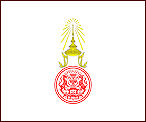
Chuan Leekpai (ชวน หลีกภัย, 1938 - ) ist Ministerpräsident (นายกรัฐมนตรีแห่งราชอาณาจักรไทย - Prime Minister)
1997-11-09 - 2001-02-09
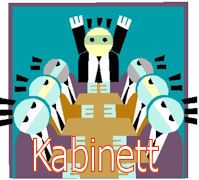
54. Kabinett: Chuan (ชวน) II
1997-11-13
Laut Bangkok Post hat Bangkok pro Einwohner 0,59 m² Grünfläche. Die Weltgesundheitsorganisation fordert für Städte 4 m² Grünfläche pro Einwohner.
1997-11-15
Ein Maniok-Pflanzer erklärt in der Zeitung The Nation:
"Now I just live for the first, sixteenth, and twentieth of each month [Tage der Lotterie-Ziehung]. This is something that inspires me to live. Who knows if one day I may wake up and become rich ... What can I do? I didn’t know where to turn after the baht flotation. My cassava plantation isn’t productive this season either, and the prices of everything just keep rising." [Zitiert in: Pattana Kitiarsa [พัฒนา กิติอาษา] <1968-2013>: Mediums, monks, and amulets : Thai popular Buddhism today. -- Chiang Mai : Silkworm, [2012]. -- 170 S. : Ill ; 21 cm. -- ISBN 9786162150494. -- S. 73.]
Abb.: Maniokpflanzer bei Khorat (โคราช), 2009
[Bildquelle:
1997-11-21
Die Überreste von 21.347 Unfallopfern und Obdachlosen, für die sich keine Angehörigen gemeldet hatten und die sich im Lauf der Zeit vor einer "wohltätigen" Institution angesammelt hatten, werden aus Bangkok zu einer neuen temporären Leichenstätte außerhalb Bangkoks transportiert.
1997-11-21
Guinness Buch der Rekorde: Die Haare von Medizinmann Hoo Sateow (gest. 2009), Mon Nga, Provinz Chiang Mai, werden auseinandergerollt: sie sind 5,15 m lang. Es sind damit die längsten Haare der Welt. Hoo lässt sich seit über 70 Jahren die Haare nicht mehr schneiden. Mit 18 war er nach einem Haarschnitt krank und schwor, sich nie wieder die Haare schneiden zu lassen.
1997-11-24
Bangkok Post: die bestbezahlte Kinderarbeit ist Prostitution. Kinderprostituierte verdienen ca. 6.300 Baht pro Monat.
1997-11-24

Die viertgrößte Wertpapierfirma Japans, Yamaichi Securities (山一證券株式会社), bricht unter ihren Schulden zusammen.
"Yamaichi Securities Co., Ltd. (山一證券株式会社 Yamaichi Shōken Kabushiki-gaisha) was a Japanese securities trading firm. The company announced it would cease operations on November 24, 1997 and was declared bankrupt by the Tokyo District Court on June 2, 1999. History
Yamaichi, formed in the late 1800s, was at one time one of the four major Japanese brokerages. Its clients were major Japanese corporations.[1]
In the boom of the 1980s it was given specified sums of money by 10 of its clients to invest as it saw fit. A sharp downturn in the early 1990s and poor dealings by Yamaichi generated losses of more than 200 billion yen. Fearing the demise of the firm through loss of reputation that would result if the scale of losses became known, the brokerage shouldered the loss of its clients, and moved it off balance sheet.
Tobashi and collapseIn January 1992, Yamaichi executives resorted to such a tobashi scheme (簿外債務), setting up a separate company called Yamaichi Enterprise which opened an account at the Tokyo branch of Credit Suisse. Depositing ¥200 billion in Japanese government bonds, the Yamaichi subsidiary then used the dummy companies to generate profits for clients while eventually absorbing losses of ¥158.3 billion. A separate scheme using foreign currency bonds resulted in losses of ¥106.5 billion being hidden in Yamaichi's Australian subsidiary.
Tsugio Yukihira, chairman of the brokerage at the time of its collapse, acknowledged in front of a Japanese Diet hearing that the activities were illegal. He said that only three people at the brokerage, namely himself former President Atsuo Miki and another individual, knew about the arrangements; he declined to name the 10 firms involved in the illegal trading.[1] The company announced it would cease operations on November 24, 1997 and was declared bankrupt by the Tokyo District Court on June 2, 1999.
The company's last president, Shohei Nozawa made a tearful public apology on Japanese television. Japan's Minister of Finance announced that steps would be taken to ensure the event would not further destabilize the frail Japanese banking system and economy as a whole. On June 1, 2001, the company's last chairman, Tsugio Yukihira, settled a lawsuit filed in Tokyo District Court. Suitors alleged his window-dressing tobashi schemes and illegal dealings had undermined the brokerage and led to its demise."
[Quelle: http://en.wikipedia.org/wiki/Yamaichi_Securities. -- Zugriff am 2011-12-19]
1997-11-29
TV-Star "Namfon" Kullanat Preeyawat (น้ำฝน กุลณัฐ ปรียะวัฒน์, 1976 - ) und 46 weitere werden wegen der Einnahme von Ecstasy auf einer Drogen-Party in Pathum Thani (ปทุมธานี) festgenommen. Der Gebrauch von Designer-Drogen wird unter Jugendlichen immer beliebter. Namfon wird gegen Kaution freigelassen und gibt unter Tränen eine Pressekonferenz. Sie behauptet, sie habe Ecstasy unabsichtlich zu sich genommen, als sie das Glas eines Freunds / einer Freundin benutzte.
Künstlerlink auf Spotify:
URI: spotify:artist:3yVv7dBimrE9QMZ03lSe3f
URL: https://open.spotify.com/artist/3yVv7dBimrE9QMZ03lSe3f
Abb.: Lage von Pathum Thani (ปทุมธานี)
[Bildquelle: OpenStreetMap. -- Creative Commons Lizenz (Namensnennung, share alike)]
Abb.: "Namfon" Kullanat Preeyawat (น้ำฝน กุลณัฐ ปรียะวัฒน์)
[Bildquelle: th.Wikipedia. -- Fair use]
Abb.: Ecstasy
[Bildquelle: Psychonaught / Wikipedia. -- Public domain]
1997-12
Der Film Dang Bireley's and Young Gangsters (2499 อันธพาลครองเมือง = 2499 Antapan Krong Muang) des Filemachers Nonzee Nimibutr (นนทรีย์ นิมิบุตร, 1962 - ) findet im In-und Ausland große Beachtung.
Abb.: Plakat
[Bildquelle: Wikipedia. -- Fair use]
"Dang Bireley's and Young Gangsters (Thai: 2499 อันธพาลครองเมือง or 2499 Antapan Krong Muang) is a 1997 crime drama film about young Thai gangsters in 1950s Thailand. Featuring John Woo-style ( 吳宇森) heroic bloodshed, it was the debut film from director Nonzee Nimibutr (นนทรีย์ นิมิบุตร) and was the first screenplay by director and screenwriter Wisit Sasanatieng (วิศิษฏ์ ศาสนเที่ยง). The 2499 in the Thai title refers to the year in the Buddhist calendar (พุทธศักราช) when the story starts, corresponding to the Gregorian year 1956.
PlotDang, the son of a prostitute, growing up in 1950s Thailand, compensates for his inferiority complex by boosting up his ego. At the age of 13, he killed a man who was beating his mother. By age 16, he had dropped out of school and started his own protection racket. With his right-hand man Lam Sing, Dang is highly protective of Piak, and is also friends with Pu Bottle Bomb and Pu's sidekick Dum.
Dang attracts the attention of a young night club singer named Wallapa, who pressures Dang to stop being a gangster and live a normal life. Dang's mother also wishes that he would stop being gangster and ordain as a Buddhist monk.
Dang carves out more territory by killing the local crime boss Mad Dog. Meanwhile, Piak is caught up in a fight between rival school gangs, instigated by Pu and Dum. The fight leads to a falling out between Dang and Pu the beginning of a feud between the two. Following a military coup all the gangsters must leave Bangkok for the countryside, Dang, Lam Sing and Piak go to work for Sergeant Chien, a former policeman turned gangster, at Chien's bar and gambling den next to an American military base. Chien needs more muscle to go against a rival operator, Headman Tek, and brings in Pu and Dum against Dang's wishes. Pu and Dum stir up trouble in the gambling den and reignite their feud with Dang's gang although Sergeant Chein tries to calm them. However Sergeant Chien is killed by a motorcyclist gunman and Pu and Dum go to work with his rival Headman Tek forcing Dang's gang out of the town.
Dang returns to Bangkok, where he plans on fulfilling his mother's wishes and taking his oath as a monk. However Pu and Dum show up during the ceremony and gun battle ensues. Lam Sing is killed, and Dang and Piak are wounded, but Pu and Dum are killed.
In an epilogue, narrated by an older Piak, it turns out Dang survived his wounds, but continued as a gangster seemingly unable to become a monk, and then died in a car accident at age 24, just like his idol James Dean.
CastAwards and nominations
- Jessadaporn Pholdee (เจษฎาภรณ์ ผลดี) as Dang Bireley
- Noppachai Muttaweevong (นพชัย มัททวีวงศ์) as Lam Sing
- Attaporn Teemakorn (อรรถพร ธีมากร) as Piak
Supakorn Kitsuwon (ศุภกรณ์ กิจสุวรรณ) as Pu Bottle Bomb
- Chartchai Ngamsan (ชาติชาย งามสรรพ์) as Dum Esso
- Champagne X (แชมเปญ เอ็กซ์) as Wallapa
Apichart Choosakul (อภิชาติ ชูสกุล) as Sergeant Chien
- Parichart Borsudhi (ปาริชาติ บริสุทธิ์) as Dang's mother
- Piya Bunnak as Pol
- Teerachai Plugpimarn as Mad Dog
- Suthakorn Jaimun as Headman Tek
[Quelle: http://en.wikipedia.org/wiki/Dang_Bireley%27s_and_Young_Gangsters. -- Zugriff am 2011-12-22]
- 1997 Vancouver International Film Festival - nominated for a Dragons and Tigers award."
Abb.: Nonzee Nimibutr (นนทรีย์ นิมิบุตร), 2009
[Bildquelle: Sry85 / Wikipedia. -- GNU FDLicense]
"Nonsi Nimibut (alternative Schreibweise: Nonzee Nimibutr, auch Nonsree Nimibut; Thai: นนทรีย์ นิมิบุตร; * 1962 in der Provinz Nonthaburi, Thailand) ist ein thailändischer Regisseur, Drehbuchautor und Produzent. Er gilt als einer der Wegbereiter der sich in den 1990er Jahren erneuernden thailändischen Filmszene. Leben und Leistungen
Nonsi Nimibut absolvierte 1987 ein Studium der Visuellen Kommunikation an der Silpakorn-Universität mit einem Bachelor of Arts. Zu seinen Kommilitonen zählte unter anderem der spätere Regisseur und Drehbuchautor Wisit Sasanatieng (วิศิษฏ์ ศาสนเที่ยง) und der Produktionsdesigner Ek Iemchuen (เอก เอี่ยมชื่น). Seine künstlerische Laufbahn begann er zunächst als Regisseur von Werbefilmen und Musikvideos, die ihn damals einige Referenzen einbrachten.
Zu einer Zeit in der die thailändische Filmindustrie gänzlich am Boden lag − man produzierte häufig billige Massenproduktionen und nur die wenigsten heimischen Spielfilmproduktionen schafften den Einzug in die Lichtspielhäuser − debütierte Nonsi 1997 mit dem Gangsterfilm Dang Bireley's and Young Gangsters der wahren Geschichte des Kriminellen Piak Visutkasat, der sich im Film als alter Mann selbst spielt. Nonsis Spielfilmdebüt avancierte in Thailand zu einem Publikumserfolg, brach dabei mit etwa 75 Millionen Baht alle Kassenrekorde und wurde sowohl von der Kritik als auch von den Kinogängern wohlwollend aufgenommen. Mit diesem Streifen, dessen Drehbuch Wisit Sasanatieng schrieb, gelang ihm der nationale Durchbruch sowie ein internationaler Achtungserfolg.
1999 folgte sein zweiter Spielfilm, Nang Nak – Return from the Dead, und obwohl es die insgesamt 21. Verfilmung eines populären thailändischen Volksmärchens ist, das abermals ein Kassenschlager in seinem Heimatland wurde, nahm das Publikum dieses „thailändische Phänomen“ erneut gut auf. Der Stoff, der zwischen Love- und Ghost-Story pendelt und dessen Inszenierung in die internationale Filmauswertung aufgenommen wurde, spielte 150 Millionen Baht ein – das zwölffache seiner Produktionskosten. Eine für thailändische Verhältnisse kaum für möglich gehaltene Summe und folglicherweise ein neuer Einspielrekord.
Angesichts dieses kommerziellen Erfolges gründete Nimibut seine eigene Produktionsfirma Cinemasia und produzierte mit ausländischem Fremdkapital der im Jahr 2000 gegründeten chinesischen Applause Pictures seinen dritten abendfüllenden Spielfilm Jan Dara mit der Hongkong-Schauspielerin Christy Chung (钟丽缇), der in Thailand schon vor der Veröffentlichung für heftige Kontroversen sorgte, da er heikle Themen wie Inzest, Vergewaltigung und Abtreibung aufgriff. Daraufhin kam der Film nur mit erheblichen Schnittfassungen in den heimischen Verleih, wohingegen er ungeschnitten auf internationalen Filmfestivals zu sehen war.
Filmografie
- Regie
- 1997: Dang Bireley's and Young Gangsters (2499 อันธพาลครองเมือง, 2499 Anthapan Khrong Kueang)
- 2000: Nang Nak – Return from the Dead (นางนาก, Nang Nak)
- 2001: Jan Dara (จันดารา, Chan Dara)
- 2002: Three… Nightmares (The Wheel) (อารมณ์ อาถรรพ์ อาฆาต, Arom Athan Akhat)
- 2003: OK Baytong (โอเคเบตง, Okhe-Betong)
- 2008: The Queens of Pattani (ปืนใหญ่จอมสลัด, Puen Yai Chom Sa-lat)
- Produktion
Literatur
- 1999: Bangkok Dangerous (เพชรฆาตเงียบ อันตราย, Phet Khat Antarai)
- 2000: Tears of the Black Tiger (ฟ้าทะลายโจร, Fah Talai Chon)
- 2000: Bang Rajan – Kampf der Verlorenen (บางระจัน, Bang Rachan)
- 2001: Jan Dara (จันดารา, Chan Dara)
- 2001: Monrak – Magische Liebe (มนต์รักทรานซิสเตอร์, Monrak Transistor)
- 2002: Three… Nightmares (อารมณ์ อาถรรพ์ อาฆาต, Arom Athan Akhat
- 2003: Last Life in the Universe (รื่องรัก น้อยนิด มหาศาล, Rueang Rak Noi Nit Mahasan)
- 2004: The Eye 2 (見鬼2)
- 2004: Jod mai rak (เดอะ เลตเตอร์ จดหมายรัก, Doe Let-Toe Chotmai-Rak))
- 2004: The Overture (โหมโรง, Hom rong)
- 2006: Noo Hin: The Movie (หนูหิ่น เดอะมูฟว, Nu Hin Doe Mup-Wi)
- 2008: The Queens of Pattani (ปืนใหญ่จอมสลัด, Puen Yai Chom Sa-lat)
- Jörg Nicolaus in CineAsia #5, Nonzee Nimibutr – Thailands erfolgreichster Moralist. Heft, Herbst/Winter 2002"
[Quelle: http://en.wikipedia.org/wiki/Nonzee_Nimibutr. -- Zugriff am 2011-12-22]
1997-12
Sein drittes Album, "Fun Fun Fun", macht den Thai Hip-Hop-Sänger Joey Boy (โจอี้ บอย, 1975 - ) zum Superstar.
Künstlerlink auf Spotify:
URI: spotify:artist:47kdoPPkTjqUUs68FPmxB2
URL: https://open.spotify.com/artist/47kdoPPkTjqUUs68FPmxB2
Abb.: Joey Boy (โจอี้ บอย), 2006
[Bildquelle: Sry85 / Wikipedia. -- GNU FDLicense]
"Joey Boy (Thai: โจอี้ บอย or Apisit Opsasaimlikit, อภิสิทธิ์ โอภาสเอี่ยมลิขิต, born 1975) is a Thai hip hop singer and producer. Biography
Born into a Thai-Chinese family, Joey Boy started listening to hip hop when he was 14 years old and skateboarding. In 1994, he was signed to Bakery Music. His first release was a self-titled EP. He recorded nine more albums with the label.
Fun, Fun, Fun and work with SnowIn 1995, Joey Boy began collaborating with multi-platinum Canadian reggae artist, Snow. In 1995, Joey Boy flew to Toronto to record "Fun, Fun, Fun" with Snow and the single went on to become one of the top selling singles in Thailand. The video for "Fun, Fun, Fun" featured Snow and Joey Boy touring Toronto. In 1997, Joey Boy appeared on Snow's single, "Me and Joey."
Gancore and the Black Eyed PeasIn 2000, he moved to GMM Grammy (จีเอ็มเอ็ม แกรมมี่), where he runs his own record label, Gancore Club, and produces other artists.
He has spent time in the United States, where he became acquainted with Will.i.am of The Black Eyed Peas, who co-produced Joey Boy's song "LA to BKK". He met Will.i.am outside a disco in San Francisco, and introduced himself. "Hey you, we're Thai rappers and we like your songs," he recalls saying to Will.i.am. When the Black Eyed Peas came to Thailand in 2004, Joey Boy was the opening act and was invited onstage by Will.i.am during the Black Eyed Peas' show. He also opened for the Black Eyed Peas when they played in Bangkok in 2006, and has continued to collaborate with the band on his albums.
Joey Boy was among the Thai pop music artists participating in Ramakien: A Rak Opera, a rock-opera adaptation of Thailand's national epic, the Ramakien, at the Lincoln Center for Performing Arts in 2006.
He made his feature film debut in December 2006 in The Possible (เก๋า..เก๋า) as the leader of a 1970s Thai band patterned after The Impossibles (ดิ อิมพอสซิเบิ้ล) who time travel to the present day.
He then made a hit single "Teerak" featuring Tinglish.
Discography Bakery MusicIndependent releases
- Joey Boy (1995)
- Joey Man (1996)
- See Ya Later (Celebrate No Million Copies) (1997)
- Fun Fun Fun
- Fun Fun Fun/The Chinese Association Remix Single
- Fun Fun Fun 1,000,000
- Joey's Hit Pt. 1
- Bangkok (1998)
- Tourist (ตัวฤทธิ์)Joey Boy Anthology
- The Greatest Beats 1994-2000 (2005)
Gancore Club/GMM Grammy
- Joey Rama
- JB (EP featuring "LA/BKK")
[Quelle: http://en.wikipedia.org/wiki/Joey_Boy. -- Zugriff am 2011-12-22]
- Gancore Club Various Artists'
- Sorry, I'm Happy
- Raii Gor Ruk (ร้ายก็รัก EP) (EP, 2006)
- The Best of Joey Boy
- Original Motion Picture Soundtrack: The Possible (อัลบั้มเพลงประกอบภาพยนต์ 'เก๋า เก๋า' (2006)"
1997-12

In Japan kommt der Toyota Prius zum Verkauf. Es ist das das weltweit erste erste Großserienmodell mit eingebautem Hybridmotor.
Abb.: Toyota Prius, Saen Suk (แสนสุข), Chonburi (ชลบุรี), 2009
[Bildquelle: Ian Fuller. -- http://www.flickr.com/photos/18684820@N00/3650213338. -- Zugriff am 2013-10-07. -- Creative Commons Lizenz (Namensnennung, keine Kommerzielle Nutzung)]
1997-12-06 - 1997-12-14
1997 World Weightlifting Championships in Chiang Mai (เชียงใหม่). Frau Khassaraporn Suta (เกษราภรณ์ สุตา, 1971 - ) gewinnt eine Gold- und zwei Silbermedaillen.
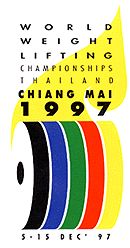
Abb.: ®Logo
[Bildquelel: Wikipedia]
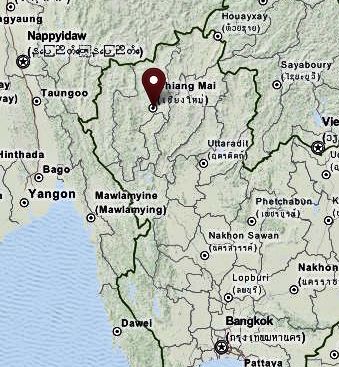
Abb.: Lage von
Chiang Mai (เชียงใหม่)
[Bildquelle: OpenStreetMap. --
Creative
Commons Lizenz (Namensnennung, share alike)]
1997-12-19
Premiere des Films Who is Running? (ท้าฟ้าลิขิต) von Oxide Pang Chun ( 彭順, 1965 - )
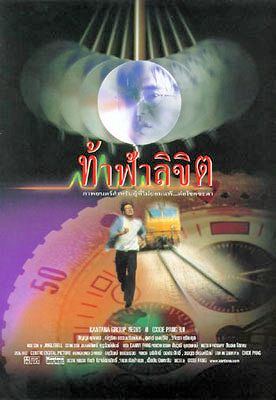
Abb.: Plakat
[Bildquelle: Wikipedia. -- Fair use]
|
"Who is Running? (Thai: ท้าฟ้าลิขิต or Ta fa likit) is a 1997 Thai drama film directed by Oxide Pang Chun ( 彭順, 1965 - ). The directorial debut of Oxide Pang, it was Thailand's official entry to the Academy Awards in 1998. PlotJiab and Wan are a young couple engaged to be married. All of the sudden, however, Wan is struck by a car and is brought to the hospital near death. When Jiab goes to a temple to pray, a mysterious monk tells him that in her past life, Wan murdered five people, and now is fated to die early in this life. To undo her bad karma and save her life, Jiab must even the balance by preventing five other people from being killed. Cast
[Quelle: http://en.wikipedia.org/wiki/Ta_fa_likit. -- Zugriff am 2013-03-19] |
1997-12-25

Premiere des satirischen US-Films Wag the Dog. Das Verhalten der Thai-Regierung 2009 gegenüber Kambodscha ist darin - nach der Meinung von Pavin Chachavalpongpun (ปวิน ชัชวาลพงศ์พันธ์) - vorgebildet.
Abb.: Filmplakat
[Bildquelle: Wikipedia. -- Fair use]
"Wag the Dog – Wenn der Schwanz mit dem Hund wedelt (Wag the Dog) ist ein US-amerikanischer Spielfilm von 1997. Die Satire basiert sehr frei auf dem Roman American Hero von Larry Beinhart (1947 - ). Handlung
Als dem US-amerikanischen Präsidenten zwei Wochen vor der Wahl vorgeworfen wird, eine minderjährige Schülerin sexuell belästigt zu haben, engagiert sein Wahlkampfteam Conrad „Mr. Fix-It“ Brean, um die Wiederwahl zu retten.
Brean sieht die einzige Möglichkeit darin, die Aufmerksamkeit der Medien auf einen (fiktiven) Krieg zu lenken, den er mit Hilfe des Filmproduzenten Motss in Szene setzt. Die Wahl des Gegners fällt auf Albanien, weil die Öffentlichkeit über dieses Land nichts weiß. Im Studio werden angebliche Augenzeugenberichte produziert, worauf die Nachrichten die Meldung verbreiten, die USA zögen gegen Albanien in den Krieg, nachdem albanische Terroristen eine Atombombe in einem Koffer versteckt in die USA schmuggeln wollten.
Die CIA weiß, dass die Geschichte erlogen ist, und nimmt die Verantwortlichen fest, um diplomatische Konflikte zu vermeiden. Jedoch gelingt es Brean, seinen Kopf aus der Schlinge zu reden. Allerdings heißt es kurz darauf, der Albanien-Krieg sei beendet. Motss, der sich nicht den Wind aus den Segeln nehmen lassen will, kommt auf die Idee, als medialen Gegenschlag einen verschollenen Helden namens William Schumann „Old Shoe“ zu erfinden, der hinter den feindlichen Linien zurückgeblieben ist. Eine Sympathiewelle mit „Old Shoe“ wird entfacht und gipfelt in der angeblichen Befreiung Schumanns kurz vor dem Wahltag.
Allerdings handelt es sich bei dem ausgesuchten Darsteller Schumanns um einen Sträfling, der eine Nonne vergewaltigt hat und nur mit starken Neuroleptika unter Kontrolle zu halten ist. Auf dem Weg zu seiner triumphalen Rückkehr als „Schumann“ rastet der Sträfling aus und bringt das Flugzeug zum Absturz. Brean, Motss, Shoe und die Präsidentenberaterin Winifred Ames gelangen unverletzt zu einer Tankstelle, wo Schumann die Tochter des Pächters belästigt, da seine Psychopharmaka keine Wirkung mehr zeigen. Darauf wird er vom Pächter erschossen. Nach dem ersten Schreck kommt dies den Spin Doctors durchaus gelegen, da sie nun keine öffentlichen Auftritte des Sträflings mehr fürchten müssen; stattdessen inszenieren sie nun seine Bestattung auf der Airbase als gefallener Veteran mit allen militärischen Würden.
Motss ist mit seiner Arbeit hochzufrieden. Umso mehr ärgert es ihn, dass im TV den einfallslosen Fernsehwerbespots des Präsidenten der Erfolg zugeschrieben wird, und er entschließt sich dazu, die ganze Sache auffliegen zu lassen. Brean warnt ihn davor, dass er mit seinem Leben spielen würde. Kurz darauf erfährt man aus den Nachrichten, dass Motss durch einen Herzinfarkt beim Sonnenbaden ums Leben gekommen sei.
In einer weiteren Nachrichtenmeldung am Schluss des Filmes ist von einem erneuten Terroranschlag in Albanien die Rede, der von einem ranghohen Militär mit den Worten kommentiert wird, dass er keinen Zweifel habe, dass nun weitere Truppen nach Albanien geschickt werden.
KritikenDas Lexikon des Internationalen Films schrieb, der Film sei eine „sehr vergnügliche schwarze Komödie“, die die „Macht der Medien und der Manipulierbarkeit der Öffentlichkeit“ thematisiere sowie „zum Nachdenken über die Machtmechanismen der Gegenwart und eine noch stärker mediengesteuerte Zukunft“ anrege. Die „guten Darsteller“ würden sie tragen.[1]
Die Frankfurter Allgemeine Zeitung resümiert in ihrer Filmkritik: „Genauso perfekt wie dieser Medienkrieg läuft der Film ab, dessen geradezu heimtückische Dramaturgie uns von Anfang an zu Mitverschwörern macht und zeigt, dass im Kino nichts über unterhaltsame Lügen geht.“[2]
Der Deutsche Depeschendienst konstatiert in einer Agenturmeldung: „Man mag es schier nicht glauben, dass Barry Levinsons neuer Film „Wag the Dog“ lange vor der Lewinsky-Affäre fertiggestellt wurde. Es drängen sich so viele Parallelen zwischen filmischer Fiktion und Bill Clintons Sex-Nöten auf, dass man zu dem Schluss gelangt, der Drehbuchautor David Mamet habe vorab Insider-Informationen bekommen oder besitze hellseherische Fähigkeiten.“[3]
Die Tageszeitung Die Welt meint „Wag the Dog ist eine vergnügliche Erinnerung an unsere Medienmanipulierbarkeit, an die Verquickung von Politik und Geschäft und an die Macht, welche die Technik kleinen Gruppen in die Hand gibt.“[4]"
[Quelle: http://de.wikipedia.org/wiki/Wag_the_Dog_%E2%80%93_Wenn_der_Schwanz_mit_dem_Hund_wedelt. -- Zugriff am 2015-01-21]
ausführlich: http://www.payer.de/thailandchronik/ressourcen.htm
Zu Chronik 1998 / B. E. 2541. -- 1. undatiert